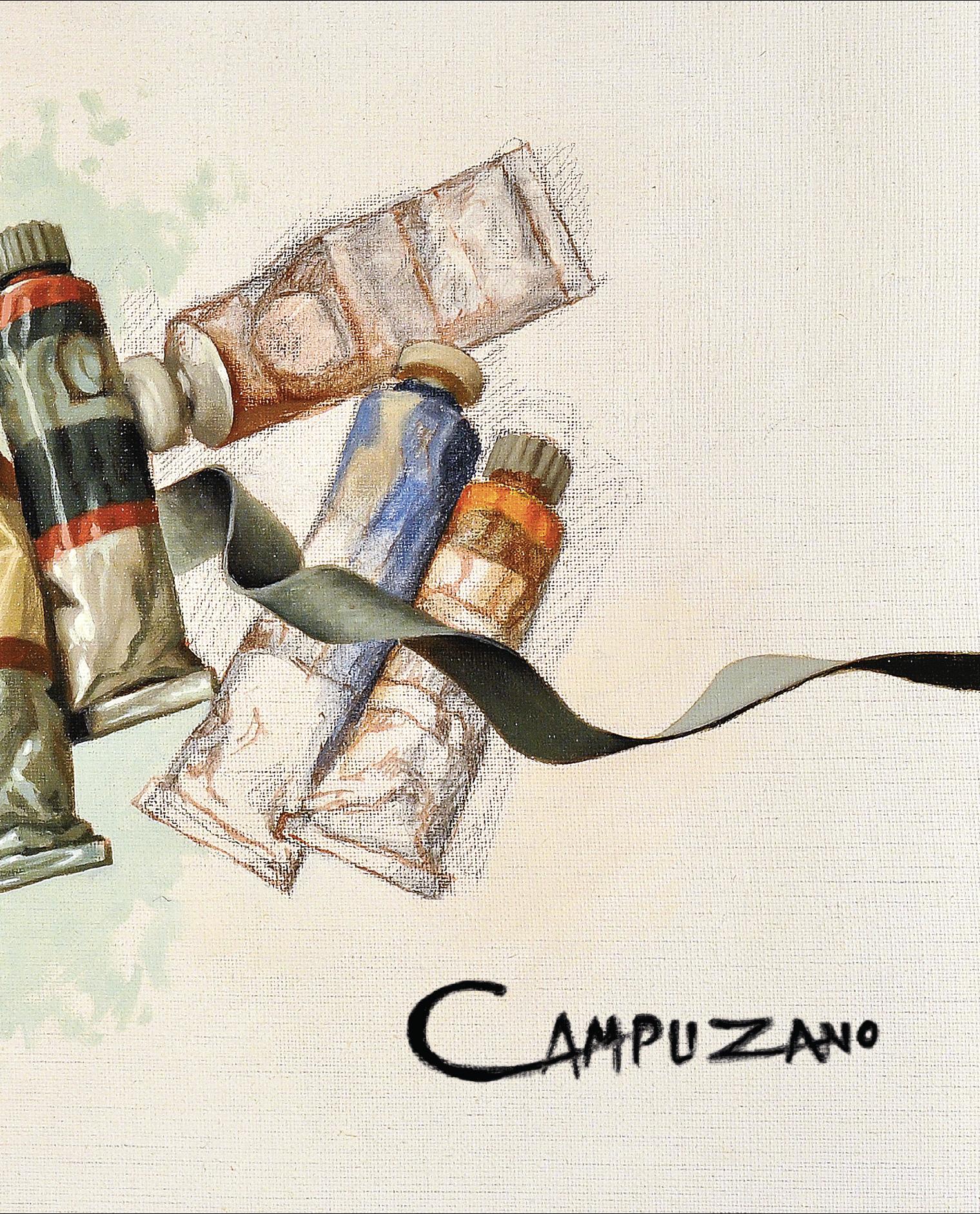
Autor
Enrique Campuzano Araya
Editora
Susana Ponce de Léon G.
Textos
Jazmín Lolas, Susana Ponce de Léon y Enrique Campuzano
Dirección de arte y diseño
Draft Diseño | www.draft.cl
Fotografías
Archivo personal del autor y familia Cheney

Digitalización de imágenes y coordinación
Guillermo Vera
Traducción
Katherine Goldman / Shamrock Idiomas Ltda.
Impresión
OGRAMA Impresores
Primera Edición, 2018
ISBN 978-956-393-308-6
Registro de Propiedad Intelectual N0 285.764
Santiago, Chile
Retrospectiva de Enrique Campuzano
El Bci es parte de una Comunidad y, por lo tanto, se involucra en ella. Creemos que como empresa privada tenemos el rol de mantener y conservar el patrimonio cultural y velar porque sea apreciado y accesible para todos.
Nuestra historia, que ya alcanza 80 años, ha estado siempre ligada a la cultura del País, ya sea aportando en proyectos específicos o a través de la promoción de la música, la arquitectura de nuestros edificios o el apoyo de artistas chilenos.
Es así que una noble coincidencia nos vuelve a conectar con el que fue colaborador de Bci durante 17 años. Enrique que desde su histórica y añorada tierra norteña de Iquique se desempeña en el Banco cuando ni sospechaba lo que iría descubriendo con el paso de los tiempos…
Es un orgullo para Bci apoyar a este maestro de la pintura contemporánea, permitiendo generar esta retrospectiva que reúne un importante grupo de obras que representan su trayectoria profesional tanto en Chile como en el extranjero.
Esperamos con esto continuar difundiendo el arte en la Comunidad.
PAOLA ALVANO CONTADOR Gerente de Asuntos Corporativos y Sostenibildad Bci
La sincronía hizo que conociera a Enrique en 1976. Ya en esa época estaba avanzando fuerte en su técnica y buscando como mejor emplear la luz, a veces tan real, otras tan difusa, que invade su obra. La sincronía hizo que ahora, en 2017, nuevamente nos encontráramos para poder materializar un gran proyecto de exponer en esta casona que acogió su primera exposición en Santiago... es la sincronía de la vida.
El realismo que imprime Enrique a su obra no es una copia de nada, es solo su mirada que logra generar un mundo propio al objeto que está presentando. Objetivamente, la trayectoria de Enrique Campuzano en sus más de 45 años de trabajo incansable, lo sitúa hoy día como el único exponente de esta técnica en nuestro país y como el que mejor nos representa año tras año en exposiciones en el exterior.
Para la Fundación Cultural de Providencia es muy grato presentar esta retrospectiva, en especial nos motiva que las nuevas generaciones conozcan su trabajo, incluida su participación como escenógrafo en el Teatro Municipal de Santiago. Bienvenido Enrique a este espacio después de 34 años.
MANUEL AHUMADA MADARIAGA Director Ejecutivo de la Fundación Cultural de Providencia
Los intereses de las personas que habitan una comunidad son muchos, sin embargo, hay un ámbito en la vida de los seres humanos que tantas veces descuidamos y no le damos la prioridad que se merece. Me refiero a cómo alimentar el espíritu, eso que hace que seamos mejores personas, que veamos la vida con otra mirada, y para eso hace bien acercar el arte a la gente, posibilitando instancias para apreciar una buena obra de teatro, un concierto, una gran muestra de ballet y, en este caso, apreciar un artista chileno de gran nivel como es el pintor Enrique Campuzano.
Para nuestra Fundación es un orgullo poder presentar este libro que recoge lo mejor de su trayectoria artística, estamos ciertos que la exposición que se presentará en el Palacio Schacht va a generar mucho interés en la gente, y en especial nos interesa que sea visitada por estudiantes de las numerosas universidades que están en la comuna, como también los alumnos de colegios, para que puedan apreciar el arte de un gran artista.
EVELYN MATTHEI FORNET Presidenta Directorio Fundación Cultural de Providencia
PRÓLOGO 10 ESTUDIO DE COPIAS 18 BODEGONES 22 FIGURA HUMANA 76 CITAS PICTÓRICAS 114 DISEÑO TEATRAL 140 PAPELES 162 CURRÍCULUM 190
Enrique Campuzano / 2017
“El amor ahuyenta el miedo y recíprocamente el miedo ahuyenta al amor. Y no solo al amor el miedo expulsa; también a la inteligencia, la bondad, todo pensamiento de belleza y verdad, y solo queda la desesperación muda, y al final, el miedo llega a expulsar del hombre la humanidad misma”.
Aldous Huxley (1894-1963)
Este libro es retrospectivo, porque a los 70 años tengo más pasado que futuro.
Supongo que la pintura que me gusta hacer es el resultado de mi historia y refleja las vivencias que forman mi patrimonio cultural.
Nací en Iquique y en una familia ideal, encabezada por Santos Campuzano y María Araya. Nunca supimos de violencia ni de castigos. Tres niñitas llegaron antes que yo. Dicen que papá Santos enloqueció de alegría cuando Julia Carpio, la matrona del barrio, le dijo que “las joyas de la corona” eran varoniles.
Mis primeros recuerdos me llevan al santuario paterno, un amplio taller instalado dentro de la casa pero separado del ruidoso acontecer doméstico, que escuchábamos en sordina. Porque en cuanto pudo sacarme de la cuna, mi padre me secuestró para adiestrarme en su oficio: hacer zapatos personalizados para pies sanos y enfermos, con materiales de alta calidad. Los fabricaba de apariencia seria o festiva, teniendo en común el exquisito diseño. Aprendiendo las destrezas y técnicas que mi padre se empeñaba en traspasarme, adquirí la práctica del movimiento de la mano. Normalmente me hería con los afilados cuchillos de cortar cuero y suela. Entonces, con absoluta naturalidad, él tomaba una tira de cualquier trapo, me envolvía los dedos lastimados y los metía en una botella de ron de quemar. No tengo memoria de
haber sentido dolor, pero sí escucho la voz de mi madre: “Me vas a matar al niño”. La mirábamos sorprendidos.
Los cuatro hijos fuimos a colegios salesianos; mis hermanas, con unas monjas envueltas en telas ondulantes con olor a lavanda que parecían flotar sobre las baldosas enceradas. Yo, con los curas, que solo eran estéticos cuando usaban los atuendos ceremoniales. De esos días recuerdo el tardío desayuno después de la obligatoria misa y comunión en ayunas, con el paso previo por la confesión para borrar mi único y reiterado pecado de niñez: mirar el calendario del taller en el que Marilyn Monroe posaba desnuda sobre fondo rojo, como el fuego eterno que me esperaba si no dominaba ese vicio horrendo. Los curas nos mantenían en un temor constante, aterrorizándonos con los “pecados de la carne”.
La parte positiva del colegio tiene que ver con lo artístico. El cura que administraba los castigos con siniestro deleite, tenía una gran sensibilidad musical que derrochaba a la hora de la siesta, cuando se encerraba en la capilla y hacía tronar el armonio con Bach y otros autores profanos. Oculto en la sacristía, detrás de las capas pluviales, yo disfrutaba de sus catarsis. Otra manifestación artística que me producía gran impacto era la fastuosa decoración del recinto sagrado, que incluye ese creativo despliegue de imaginación de los artesanos que la idearon y
PRÓLOGO
10 RETROSPECTIVA DE ENRIQUE CAMPUZANO
construyeron. A todo eso se agregaba el resplandor de las ceremonias especiales: música, incienso, canto en latín y vestuario, el espectáculo total al que aspiraba Richard Wagner.
Creo que mi padre me inculcó la seriedad y respeto por el oficio. Mi madre me traspasó su amor por la poesía y por las letras de los tangos, que fueron nuestras canciones de cuna; también me enseñó a disfrutar del cine. Espero que haya sido feliz al lado de ese hombre bueno que me duró tan poco.

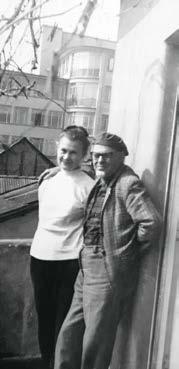


Mi padre se fue al cielo, en el que creía firmemente, cuando yo tenía siete años. En ese momento se rompió el encanto de dejarme llevar por el embeleso y, repentinamente, mi entorno se llenó de gente y de situaciones nuevas; todas incomprensiblemente violentas y confusas. Me acerqué cuanto más pude a la iglesia, cargado de preguntas que los estudiosos clérigos no fueron capaces de responder. En la orfandad, busqué refugio.
En ese tiempo de exploración frenética, en los años sesenta tuve una especie de epifanía que cambió radicalmente mi vida; sucedió cuando en el Teatro Municipal de Iquique se presentó “La pérgola de las flores”, de Isidora Aguirre. Alucinado por el espectáculo que iba descubriendo desde la galería, decidí que ese sería mi objetivo en la vida. Indagando sin descanso, encontré a un grupo de teatro aficionado, formado por diversos profesionales mayores que yo y
necesitados de alguien que se encargara de todo lo que no fuera actuar. Recuperé la alegría de sentirme acogido por gente buena y sensible a las cosas humanas.
La economía familiar me obligó a dejar el colegio y aceptar una labor esclavizante y de sueldo miserable en un taller de sastrería. De allí me salvó la preocupación que sentían por mí en el grupo de teatro, al que pertenecí desde el primer momento. Como a mis compañeros les inquietaba mucho que yo no siguiera estudiando, Lito Cruz, que integraba el elenco, me presentó en el banco Bci, donde él trabajaba, y fui contratado como junior.


Retomé mis estudios, y los seis años de humanidades en el liceo nocturno los compatibilicé con mi experiencia teatral. Mi espléndido trabajo en el Banco, gracias a la Caja Bancaria de Pensiones, me permitía pasar mis vacaciones en Santiago durante julio y hartarme de visitas a librerías y funciones de teatro, conciertos, ópera y ballet para luego “rumiarlas” a mi regreso en mi pueblo.
El matrimonio formado por Cecilia Millar y Jaime Torres cohesionaban al grupo teatral, formado por gente diversa, cuyo afán era el crecimiento espiritual a través del conocimiento y la educación. En ese espacio adquirí los rudimentos del manejo eléctrico, a inventar decorados, aprender carpintería, hacer afiches y un sinfín de labores que incluían desde el barrido del escenario
1 2
1/Santos Campuzano Riveros padre.
4 5 3 6 PRÓLOGO 11
2/María Araya Olivares madre. 3/Zapatería Campuzano, Iquique, 1945. 4/Medy y Laci en el taller Los Naranjos. 5/Campuzano en Iquique, 1965. 6/Campuzano con cuello y corbata en Santiago, 1970.
a ser el último en salir, apagar la luz y cerrar la sala. Me quedaba estrecho el cuerpo de tanta maravilla.

En mi trabajo con el Banco estuve a cargo de preparar una residencia utilizada para las visitas y atender a los ejecutivos que veraneaban con sus familias. Debía asistirlos en todo lo relativo al equipamiento y orientación turística. Este acercamiento facilitó mi promoción para optar a una de las becas que otorgaba el Presidente de Bci para estudios universitarios.
Llegué a Santiago a fines del 70, con dos cajas de cartón con mi ropa y con una cantidad de sueños que se me salían por los poros. El primer día, en la oficina del gerente general tuve la primera mala noticia: el Gobierno intervino el Bci y, obviamente, se suspendieron las ayudas económicas.
Instalado en el departamento de contabilidad de la oficina central, ubicada en calle Huérfanos, y con la esperanza de que el ambiente político se calmara y así retomar mi proyecto, realicé una gran cantidad de estudios tutoriales relativos al teatro, la literatura y la fotografía. En mis ratos libres dibujaba y pintaba.


El ambiente laboral era de amable compañerismo, solo alterado por la conmoción que, cada vez con más frecuencia, producían los enfrentamientos de grupos extremistas. Este clima de intolerancia e intereses creados llevó al país al peor de los lugares.
Cuando volvimos al trabajo, las cosas fueron distintas; la situación de constantes hostilidades enrarecía la atmósfera. En 1973, perdidas las esperanzas de ir a la universidad, regresé a la soledad que me recibió cuando llegué a Santiago.



Intuyendo que mi trabajo podría terminar tras la gestación de la crisis económica y con la determinación de no retornar a mi pueblo, indagué la manera de echar mano a alguna de mis habilidades y crearme una actividad comercial. Ya había leído muchos estudios críticos sobre los “ismos” y una gran cantidad de libros de arte mundial y nacional, pero ninguno me había enseñado a pintar. Busqué entonces un profesor con quien aprender la técnica del óleo, ojalá la más rigurosa. Encontré al artista austro-húngaro Ladislao Vuchetich de Cheney, maestro en el retrato, que es lo más complejo de hacer en pintura y en cuyo ámbito él era el mejor. Me advirtió que no daba clases, pero accedió a decirme si tenía o no destino en ese afán. Miró mis retratos y señaló todos los errores que contenían, asegurándome que si realmente la pintura era lo que había elegido para mi futuro, el me ayudaría.
En Laszlo ví reflejado el mismo espíritu de respeto por el oficio que conocí en mi padre. Estableció un sistema de enseñanza que consistía en darme tareas que yo tenía que resolver por mi cuenta. Me mandó a estudiar anatomía, dibujo de figura humana

12 RETROSPECTIVA DE ENRIQUE CAMPUZANO
8 9 10 11 12 13 7
7/Bci en la calle Huelén. 8/Hermanas: Genoveva, Pilar y Olga. 9/Su primer viaje a Nueva York, 1980. 10/Campuzano en una exposición en Praxis de la calle Suecia, 1988. 11/Con Marcelo Narbona, arquitecto y coleccionista, el que le abrió el mercado de Panamá, 2002. 12/Junto a Bélgica Rodriguez- Crítica de arte, historiadora, curadora, directora de la Galería de Arte Nacional de Caracas en una de sus exposiciones en San José de Costa Rica. 13/Guillermo Vera, Enrique Campuzano y la artista Argentina Norma Bessouet en Nueva York, 1990.
y otras tantas disciplinas. Una vez al mes me regalaba una hora de su atención para revisar mis trabajos y darme indicaciones para corregirlos. Medy, su esposa, me dijo que Laci creía que yo era un tipo serio y eso le gustaba. Ese comentario fue un tremendo incentivo para seguir adelante.
Mi profesor me contó de su difícil vida en su país y de su filosofía de vida, cosas íntimas que no compartía con nadie. Me sentía tan agradecido, que en dos ocasiones les llevé regalos, que aceptaron tras previa reprimenda, por considerar que era una frivolidad de mi parte gastar un dinero que me sería más útil en mi proyecto laboral.
Una exigencia de su plan de enseñanza era que pintara bodegones de todo tipo y complejidad, para aprender a manejar las texturas. También debía copiar a pintores que me gustaran y así estudiar en profundidad sus trabajos y maneras de hacer.
En 1981 llegó el momento sorpresivo pero presentido. Después de almorzar alegremente con mis compañeros del Departamento de Entrenamiento de Personal del Bci, en el que desempeñaba el cargo de Técnico en Material Didáctico y Audiovisuales, una llamada telefónica desde la Oficina Central me convocó. El jefe de personal me avisó de mi despido y así terminaron mis 17 años en una empresa que fue un privilegio conocer.
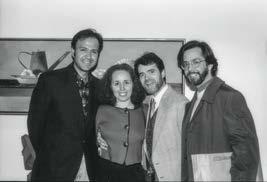

Mi carrera como pintor ya había comenzado privadamente
desde 1978, cuando la reducción drástica de los sueldos a causa de la crisis económica obligó a muchos a buscar maneras anexas para salir adelante. Comencé a participar en ventas que hacía la Embajada de Canadá para sus obras sociales y en todo tipo de concursos que me salían al paso.
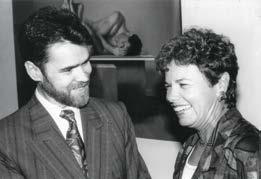
En 1984, el Instituto Cultural de Providencia invitó al certamen “Pintando Providencia” y como mi trabajo ya era conocido, me anoté en la categoría “profesional”, ganando el primer premio. Paloma Correa, que dirigía la institución, decidió abrir la próxima temporada con una muestra mía.
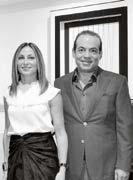


El éxito fue inesperadamente rotundo. Tomás Andreu, que iniciaba su carrera como galerista, me invitó a trabajar con la Galería Praxis. Luego me llegaron propuestas para mostrar mis trabajos en el extranjero a través de mi amigo de Miami, Fernando Fernández-Castro.
Desde entonces, este oficio sosegado y de íntima reflexión me ha permitido peregrinar por todos los países que me han parecido interesantes para enriquecer mis conocimientos artísticos y disfrutar de otras artes que complementan mis intereses. Pero lo más gratificante es que gracias a este quehacer he podido conocer a gente tan brillante en sus diversas disciplinas, que se ha interesado por mí trabajo.

PRÓLOGO 13
16 14 15 17 18 20 19
14/ Campuzano y Carol Damian crítica y especialista en arte latinoamericano durante su exposición en Miami, 1992. 15 /Guillermo Vera, Rosina Cembrano, el pintor y Ernesto Banderas en la exposición en America´s Gallery de Nueva York, 1993. 16 /Josefina Urzúa y Tomás Andreu en su Galería recién inaugurada en Santiago. 17/Campuzano y Dora Valdés-Fauli, pionera del galerismo de Miami, en 2009. 18/Blanca y Simón Tarazi de Legacy Fine Art, que acaban de cumplir 20 años de trabajo ininterrumpido en Panamá City. 19/Americas Collection en su antigua ubicación. 20/Silvia Ortíz y Velia Larcinese, directoras de la nueva Americas Collection de Miami.
Los concursos son desafíos fascinantes que obligan a ponerse creativo, generalmente se echa mano a la contingencia social del momento o a la intimidad del pintor. Mi paso por el teatro fue la escuela que me enseñó a imaginar cómo llevar una idea, un concepto a imagen visual.
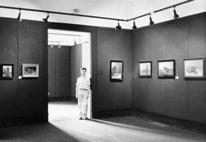


RETROSPECTIVA DE ENRIQUE CAMPUZANO
21 22 23 14
21/Con Carmen Grez, la entonces Alcaldesa de Providencia, y Lucia Gallo, recorriendo la muestra “Pintando Providencia”, 1984. 22/Campuzano recibiendo el segundo premio en “Centro de Santiago” de manos de Pedro Murtinho, decano de Arquitectura de la Universidad Católica, 1988. 23/Enrique en su primera exposición en el Instituto Cultural de Providencia, 1984.
SIN

Para el Salón Nacional de la Sociedad de Bellas Artes, que funcionaba en el Palacio de La Alhambra, donde tomaba clases de dibujo de figura humana. Aquí intenté graficar la búsqueda del tema pictórico a través de la tela, hasta romperla.

Para “Pintando Providencia”. Armado con una cámara fotográfica, traté de empaparme del ambiente del centro comercial de la comuna, que se mostraba como el barrio más alegre de la ciudad.
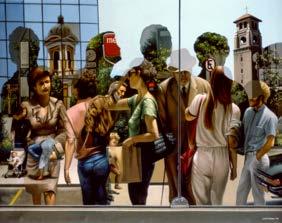
OPUS

Para “El Humor en la Pintura”, convocado por un empresario, grafiqué a los cuatro componentes de la Junta de Gobierno que sostienen las columnas del Palacio de Justicia, presidido por una “Nova Lex” cargada de alegorías.

Un banco recién instalado en Chile invitó a mostrar “El centro de Santiago”. Puse gente “superpuesta”, “removible”, en un ambiente opresivo y peligroso por el uso de prisioneros como señuelo. Al fondo, un fantasma de Congreso que dictaba leyes sin cesar.
Para “Mujer, Sueño o Realidad”, convocado por una multitienda, mostré el artificio publicitario que intenta transformar a la mujer en irresistible objeto de deseo y poder.
PRÓLOGO 15
OPUS / 1983
OPUS 67 / 1984
173 / 1987
OPUS 190 / 1988
OPUS 225 / 1989
OPUS
El Museo Nacional de Bellas Artes invitó a participar en el “Museo Abierto”. Para conectarme con la colección del MNBA tomé “La Perla del Mercader”, de Valenzuela Puelma, y extraje la figura femenina, a la que encerré en plástico para mostrar el riesgo de las enfermedades venéreas y especialmente la brutal mortandad que el recién llegado VIH estaba provocando en Chile.

OPUS
El Instituto Cultural de Providencia llamó a los pintores a mostrar “El Taller del Pintor”, en el que recordé a mis muertos queridos, el constante recurso estético del pasado, la música que inunda mi taller, la presencia de lo humano en un paisaje nortino y mi relación con el mercado y el acontecer noticioso.

16 RETROSPECTIVA DE ENRIQUE CAMPUZANO
262 / 1990
432 / 1995
Nestlé, que ya tenía pintura mía en su colección, me encargó un tema institucional. Visité las instalaciones de Santiago y un ejecutivo de los laboratorios me mostró los productos más relevantes y el interesante universo de los distintos paladares de los países en que están presentes.
Para ilustrar un trabajo académico titulado “El papel de los sueños en la creatividad y producción de artistas visuales chilenos” que se mostró en el Museo de Artes Visuales en 2005. Usé mi sueño recurrente de la pérdida del perfil de New York, sus torres gemelas que me sirvieron de orientación por tanto tiempo.


PRÓLOGO 17
OPUS 416 / 2001
OPUS 639 / 2004
ESTUDIO DE COPIAS
Copiar a otros pintores es una práctica promovida por los museos y sometida a una reglamentación que protege los originales y valora el trabajo de los copistas. Por ejemplo, no permiten hacerlas del mismo tamaño del original y alertan que copiar la firma es considerado delito. Es muy común ver a los copistas tomando la totalidad o un fragmento de la obra elegida. Los museos emiten un certificado del trabajo que respalda el valor de la copia.
Se entiende que la réplica es una aproximación visual del original, que difícilmente recrea en detalle la particular gestualidad del pincel del autor y mucho menos alcanza a captar el comportamiento de los diversos materiales que intervienen: la tela o tabla que generalmente se la prepara para ser el soporte del diseño, la compleja mezcla de aceites, diluyentes, barnices, acelerantes de secado y fijativos usados para distribuír sobre el soporte, en diferentes densidades (grafitos, carboncillos, tizas y otros elementos usados para dibujar, como la punta de oro o plata).
La cantidad de luz, o falta de ella, crea la “escala tonal”. Así cada mezcla de colores debe someterse a esta escala. La composición química de cada color en el óleo es determinante cuando
se mezclan dos o más colores, buscando la precisión que se ve en el original.
Siempre, cada autor ha elegido de la inmensa variedad que ofrece el mercado, los colores que cree adecuados, éstos pueden estar emulsionados con aceite o con componentes químicos diversos. También está el recurso de los pigmentos en forma de polvo, que el pintor disuelve, en su particular mezcla y densidad, en el líquido (médium) que prefiere.
Todo lo anterior es necesario tenerlo presente para asumir que la copia no es más que una mirada a “vuelo de pájaro” del original.
Para el pintor que ama su oficio no existe ejercicio más apasionante que el intentar ponerse en los zapatos de los autores que reverencia.



Mi maestro, al plantearme el tema de las copias, me alertó del riesgo que puede comprometer al propio estilo del pintor al adoptar el de otro y terminar pintando “a la manera de”.
Preservar el propio estilo requiere ser fiel a uno mismo y hacer el trabajo como a uno le apetece, sin miedo; ser distinto entre los distintos.

18 RETROSPECTIVA DE ENRIQUE CAMPUZANO

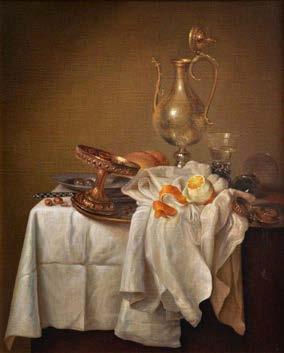
PRÓLOGO 19
Autorretrato atribuído a Velázquez.
“Óleo sobre madera”, de Heda Willem Claesz Es un irresistible desafío de construcción, texturas y numerosos reflejos.
“Lavandería subterránea”, de Abram Efimovich Arjípov, me interesó por el efecto de luz que envuelve al tema y el contenido psicológico, que muestra a dos mujeres jóvenes comentando asuntos propios de su edad y, en primer plano, dos veteranas abstraídas en sus memorias.

20 RETROSPECTIVA DE ENRIQUE CAMPUZANO
“Galería de pinturas”, de Lawrence Alma-Tadema, es un ejemplo de quien hace su propio camino. Pintó temas extemporáneos de una manera considerada pasada de moda. Lo copié por lo intrincado de su perspectiva, las figuras que contiene su dibujo y la variedad cromática y lumínica que exige estar atento a los detalles para que la mentira no suene tan falsa.

PRÓLOGO 21
BODEGONES

24 RETROSPECTIVA DE ENRIQUE CAMPUZANO OPUS 211 Óleo en tela 54x65 cm. 1989
“Los maestros flamencos del Bodegón me siguen fascinando por el dosificado uso de la luz y la sombra. En mi afán de captar esa cualidad, mis primeras pinturas me quedaron tenebristas. De a poco aprendí a manejar la luz y el color”.
Por Jazmín Lolas
EEnrique Campuzano recibió de su maestro un mandato que demandaba esfuerzo y paciencia, pero que a la larga rendiría frutos: “Su instrucción –y uno de sus grandes consejos– fue: ‘Vas a pintar bodegones hasta que los puedas hacer de memoria’. Me explicó que la figura humana reúne una infinidad de texturas y que la única manera de dominarlas es pintando bodegones. Primero, me pidió una taza, luego un cristal, todo sobre tablas pequeñas que me enseñó a preparar. Y a la vez estudiaba anatomía, porque mi profesor insistía en que si quería ser retratista debía conocer bien la estructura ósea y la musculatura humana”.
Firmemente decidido a perfeccionarse, el pintor siguió la pauta al pie de la letra. Recuerda que aprendió mucho y que fue “muy feliz” cumpliendo con esa tarea, y el tiempo mostró que no tomó la experiencia sólo como un entrenamiento, sino que terminó transformando ese género en una de las facetas relevantes y elogiadas de su obra.
“Sus naturalezas muertas son extraordinarias en la sensibilidad con el material”, escribió en Art Nexus el crítico estadounidense Leslie Judd Ahlander, quien ilustró su aseveración con los siguientes ejemplos: “En ‘Papel Tornasol’, tres jarrones de cristal sostienen un papel arrugado, doblado como ramos de flores, cada uno con una calidad táctil distinta. La película iridiscente de un jarrón es un verdadero tour de force, al jugar los muchos colores contra el duro cristal que lo sostiene”.
“En ‘Tapices’, un cúmulo de alfombras en una mesa está pintado de manera tan fina, que se puede sentir la textura del tejido, su grosor, y las puntadas individuales que se le han hecho a la tela de lana.
“En su aproximación a los temas, consigue que las texturas se vuelvan el motivo de las pinturas, con el flujo de la luz como factor de unificación. En esto, Campuzano está más cerca de Vermeer y Magritte en espíritu”.
Como sugiere este comentario, el autor ha elaborado sus bodegones a partir de una amplísima variedad de elementos, entre ellos, instrumentos musicales, libros, flores, frutas, hortalizas, vidrios, muebles, prendas de vestir. Según explica, prácticamente cualquier “amontonamiento”, por muy poco interesante que parezca, puede
ser estímulo para una pintura de ese tipo (el crítico Armando Álvarez Bravo afirmó que en la obra de Campuzano se advierte una “excelencia que nos permite reconocer lo conocido, que tantas veces pasamos por alto e ignoramos, y, a su vez, darnos cuenta de que hay mucho más allá de su apariencia”).
“Una vez hice un cuadro donde se ve un muro de hormigón con alimentos perecibles incrustados. No hay límite, las combinaciones de cosas pueden llegar a ser infinitas. De ese modo, se dan múltiples situaciones que para un pintor son sumamente útiles. El encargo que me dio en esa época Ladislao Cheney me llevó a trabajar con diferentes texturas, colores y formas, con el comportamiento de la luz”, relata.
Los colores intensos y brillantes son una cualidad de sus bodegones que llama poderosamente la atención. No siempre tuvieron ese carácter, según dice el artista, cuya pintura se acercó en los comienzos al estilo de los flamencos y tenebristas españoles: “Mis cuadros tenían, en general, ambientes muy oscuros y poco a poco los fui iluminando. Entonces alguien me dijo que por fin había encendido la luz en el taller. Pero si bien empezaron a ser más luminosos, el color siguió siendo austero, porque en esos momentos estaba más preocupado de la construcción, de que las perspectivas y el dibujo estuvieran correctos. A medida que fui adquiriendo confianza, mis bodegones empezaron a ser también más coloridos”.
En la abundante galería de naturalezas muertas que ha producido, existe una especialmente atractiva. Se trata de una recreación de “Plato con limones, cesta con naranjas y taza con una rosa”, de Francisco de Zurbarán. En esta versión del cuadro de uno de los tenebristas españoles que lo influyeron en sus inicios, los objetos vuelan por los aires. Campuzano lo define como “un Zurbarán ingrávido”, cuyo destino era ilustrar la portada del catálogo de una de sus exposiciones en la Galería Praxis.
“Como el hombre ya había llegado a la luna, me dije, metafóricamente, voy a golpear la mesa para que todo salte. Trabajé como si se tratara de una obra para un concurso en el que me habían dado la orden de basarme en Zurbarán y darle un vuelco. Fue lo que hice”, comenta el artista, que pintó todos los componentes de esa tela de manera que quedaran en suspensión, como si se hubieran congelado.
25 BODEGONES


26 RETROSPECTIVA DE ENRIQUE CAMPUZANO OPUS 13 Óleo en tela 40x55 cm. 1984 OPUS 22 Óleo en tela 24x36 cm. 1984

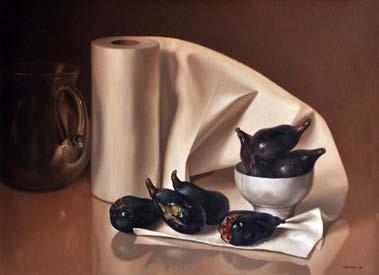
27 BODEGONES OPUS 87 Óleo en tela 54x65 cm. 1985 OPUS 180 Óleo en tela 40x55 cm. 1988

28 RETROSPECTIVA DE ENRIQUE CAMPUZANO OPUS 138 Óleo en tela 54x65 cm. 1986

29 BODEGONES OPUS 151 Óleo en tela 79x59 cm. 1986


30 RETROSPECTIVA DE ENRIQUE CAMPUZANO
1987
1987
OPUS 166 Óleo en tela 100x130 cm.
OPUS 162 Óleo en tela 81x100 cm.
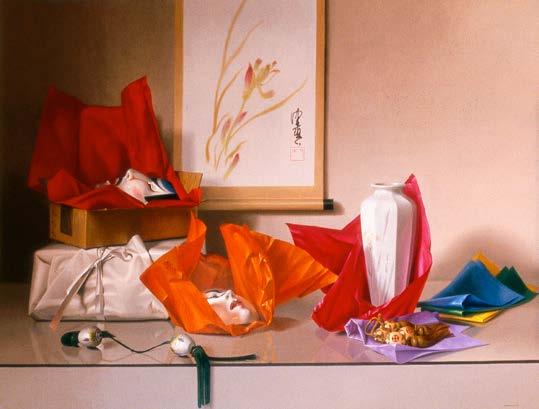
31 BODEGONES OPUS 168 Óleo en tela 100x130 cm. 1987

32 RETROSPECTIVA DE ENRIQUE CAMPUZANO OPUS 187 Óleo en tela 100x130 cm. 1988

33 BODEGONES OPUS 254 Óleo en tela 116x89 cm. 1990


34 RETROSPECTIVA DE ENRIQUE CAMPUZANO
OPUS 241 Óleo en tela 73x100 cm.
1990
OPUS 244 Óleo en tela 100x130 cm.
1990
OPUS 242 Óleo en tela 130x100 cm.
1990
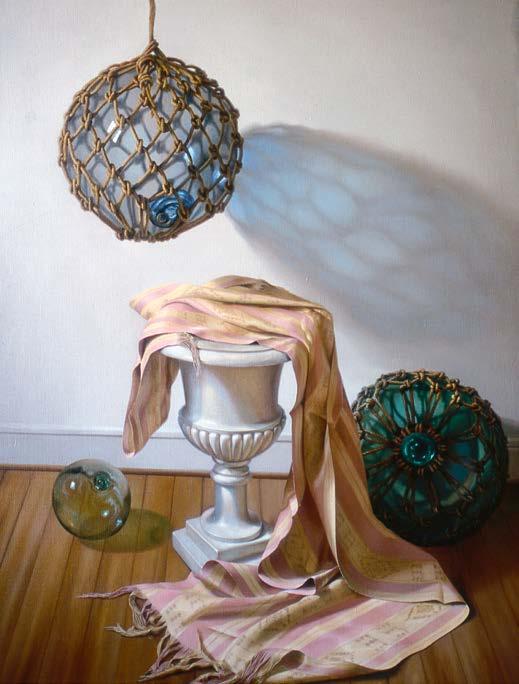
35 BODEGONES

36 RETROSPECTIVA DE ENRIQUE CAMPUZANO OPUS 245 Óleo en tela 100x130 cm. 1990

37 BODEGONES OPUS 248 Óleo en tela 100x130 cm. 1990
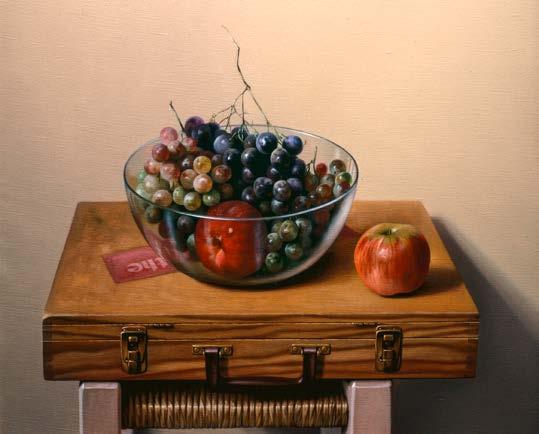
38 RETROSPECTIVA DE ENRIQUE CAMPUZANO OPUS 289 Óleo en tela 60x73 cm. 1991

39 BODEGONES OPUS 290 Óleo en tela 100x130 cm. 1991


40 RETROSPECTIVA DE ENRIQUE CAMPUZANO
OPUS 321 Óleo en tela 72.5x60.5 cm.
1991
OPUS 320 Óleo en tela 72,5x60.6 cm. 1991

41 BODEGONES OPUS 295 Óleo en tela 120x150 cm. 1991


42 RETROSPECTIVA DE ENRIQUE CAMPUZANO
OPUS 335 Óleo en tela 100x130 cm. 1992
OPUS 395 Óleo en tela 100x81 cm. 1994
OPUS 333 Óleo en tela 81x100 cm. 1992

43 BODEGONES

44 RETROSPECTIVA DE ENRIQUE CAMPUZANO OPUS 369 Óleo en tela 81x100 cm. 1993

45 BODEGONES OPUS 394 Óleo en tela 38x55 cm. 1994
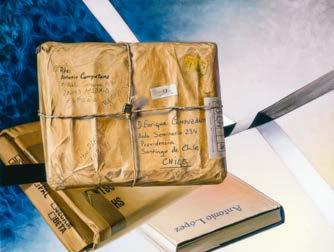

46 RETROSPECTIVA DE ENRIQUE CAMPUZANO
1994
1994
1995
OPUS
402 Óleo en tela 55x40 cm.
OPUS 409 Óleo en tela 54x65 cm.
OPUS 413 Óleo en
tela 100x80 cm.

47 BODEGONES


48 RETROSPECTIVA DE ENRIQUE CAMPUZANO
1995
OPUS 414 Óleo en tela 89x116 cm.
1995
OPUS 431 Óleo en tela 120x150 cm.


49 BODEGONES OPUS 434 Óleo en tela 100x130 cm. 1995 OPUS 469 Óleo en tela 62x95 cm. 1997
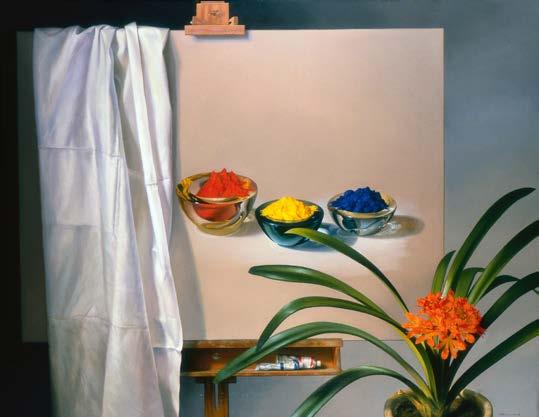
50 RETROSPECTIVA DE ENRIQUE CAMPUZANO OPUS 435 Óleo en tela 100x130 cm. 1995

51 BODEGONES OPUS 444 Óleo en tela 60x73 cm. 1996

52 RETROSPECTIVA DE ENRIQUE CAMPUZANO OPUS 453 Óleo en tela 100x81 cm. 1996

53 BODEGONES OPUS 472 Óleo en tela 100x81 cm. 1997

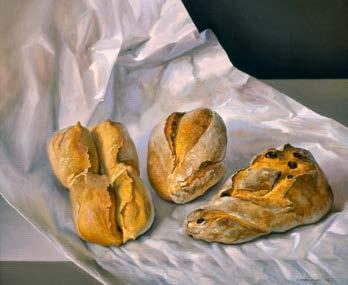
54 RETROSPECTIVA DE ENRIQUE CAMPUZANO
OPUS 493 Óleo en tela 81x100 cm. 1998
OPUS 495 Óleo en tela 38x46 cm.
1998

55 BODEGONES OPUS 498 Óleo en tela 100x81 cm. 1998

56 RETROSPECTIVA DE ENRIQUE CAMPUZANO OPUS 503 Óleo en tela 81x100 cm. 1998
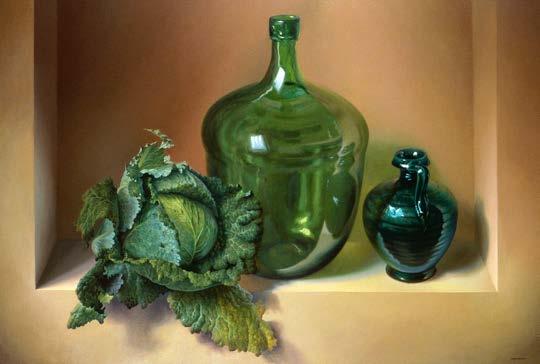
57 BODEGONES OPUS 525 Óleo en tela 83x130 cm. 2000

58 RETROSPECTIVA DE ENRIQUE CAMPUZANO OPUS 532 Óleo en tela 116x147 cm. 2000

59 BODEGONES OPUS 547 Óleo en tela 90x70 cm. 2001

60 RETROSPECTIVA DE ENRIQUE CAMPUZANO OPUS 562 Óleo en tela 95x62 cm. 2001


61 BODEGONES OPUS
Óleo
100x130
2009
Óleo
100x130
2010
756
en tela
cm.
OPUS 779
en tela
cm.

62 RETROSPECTIVA DE ENRIQUE CAMPUZANO OPUS 557 Óleo en tela 40x50 cm. 2001

63 BODEGONES OPUS 572 Óleo en tela 65x81 cm. 2002

64 RETROSPECTIVA DE ENRIQUE CAMPUZANO OPUS 611 Óleo en tela 95x62 cm. 2003

65 BODEGONES OPUS 585 Óleo en tela 95x62 cm. 2002


66 RETROSPECTIVA DE ENRIQUE CAMPUZANO OPUS 590 Óleo en tela 110x130 cm. 2002 OPUS 604 Óleo en tela 100x130 cm. 2003

67 BODEGONES OPUS 630 Óleo en tela 81x100 cm. 2004

68 RETROSPECTIVA DE ENRIQUE CAMPUZANO OPUS 607 Óleo en tela 83x135 cm. 2003

69 BODEGONES OPUS 282 Óleo en tela 100x130 cm. 1991

70 RETROSPECTIVA DE ENRIQUE CAMPUZANO
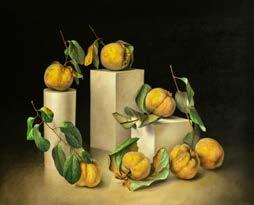


71 BODEGONES OPUS 583 Óleo en tela 90x70 cm. 2002 OPUS 733 Óleo en tela 90x70 cm. 2008 OPUS 732 Óleo en tela 90x70 cm. 2008 OPUS 731 Óleo en tela 81x100 cm. 2008


72 RETROSPECTIVA DE ENRIQUE CAMPUZANO
OPUS 906 Óleo en tela 81x100 cm.
2015
OPUS 904 Óleo en tela 81x100 cm.
2015
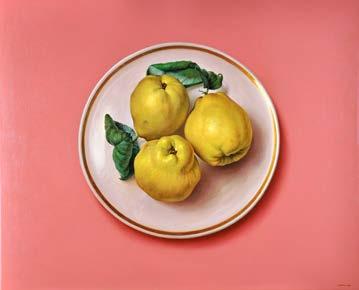

73 BODEGONES OPUS 925 Óleo en tela 81x100 cm. 2015 OPUS 924 Óleo en tela 81x100 cm. 2015


74 RETROSPECTIVA DE ENRIQUE CAMPUZANO
923,
Óleo
100x81
c/u. 2015
OPUS
tríptico
en tela
cm.


75 BODEGONES
FIGURA HUMANA

78 RETROSPECTIVA DE ENRIQUE CAMPUZANO
LEadislao Cheney me dijo: “No te apures en comenzar un cuadro, cierra los ojos y visualiza al protagonista del tema, él te ayudará a crear el ambiente adecuado: la luz, el color y la suavidad o violencia del claroscuro. Cuando lo tengas terminado en tu pensamiento, es decir, hecho, entonces lo copias y ya”.
Cuando me dio indicaciones sobre anatomía en un retrato y mientras me enumeraba los relieves del rostro, dibujaba un cráneo con carboncillo sobre un papel en el caballete ubicado a su derecha y ¡fuera de su campo visual! A continuación me dio como tarea que pintara tres fases de una calavera. De puro tímido no le pedí que me regalara su dibujo.
Haciendo teatro y analizando el comportamiento de cada personaje, aprendí a conocer al ser humano: sus enormes capacidades de entrega -hasta el sacrificio- y los terribles dolores que nos transforman en los más crueles verdugos. Más que juzgar actitudes, buscábamos los motivos que generaban esos comportamientos.
Cuando los dioses decidieron que tenía que ser pintor, era indudable que mi prójimo sería el centro de mi quehacer. Captar su naturaleza exterior y la psicología que lo impulsa, a través del retrato, sería la tarea que me ocuparía el resto de la vida.
Cada encuentro con Cheney era una clase magistral de humanismo y me sorprendía su cabal conocimiento del cuerpo humano, tanto, que sus dibujos anatómicos de vísceras eran usados para ilustrar libros de anatomía en las universidades de su país. También conocía en profundidad la naturaleza de los materiales que usaba para desarrollar su oficio de pintor, sabía de cada componente químico en la preparación de los colores al óleo. Me ilustraba sobre los cadmios, cromos, plomos, mercurio y otros. También sobre colores que “sangran” o son absorbidos por otros. El médium que uso de la marca Artel en Chile, es fórmula de él.
La musculatura animal, la nuestra, es compleja por su gran plasticidad; cada movimiento, o contracción la hace distinta e influye en el comportamiento de su entorno. Un universo que no me canso de estudiar. Una tarea pendiente que me queda por cumplir: dibujar cadáveres, que Ladislao me recomendó desde un principio.
He pintado gente desnuda y vestida. Y así como cada cuerpo es único, cada rostro es particular en su estructura y semblante. También las miradas y los pequeños gestos faciales son capaces de trasuntar estados de ánimo muy variados. Otro aspecto sorprendente del cuerpo humano es la gran amplitud cromática en cada segmento de la piel.
79 FIGURA HUMANA
OPUS 258 Óleo
150x120
1990
en tela
cm.
“Cada persona es para mí como un caleidoscopio único al que nunca he podido conocer en toda su extensión. Probablemente impedido por los recíprocos prejuicios”.
Por Enrique Campuzano
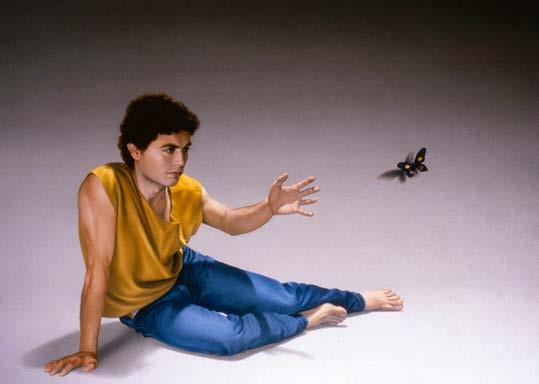
80 RETROSPECTIVA DE ENRIQUE CAMPUZANO OPUS 91 Óleo en tela 100x130 cm. 1985

81 FIGURA HUMANA OPUS
1984
57 Óleo en tela 100x81 cm.
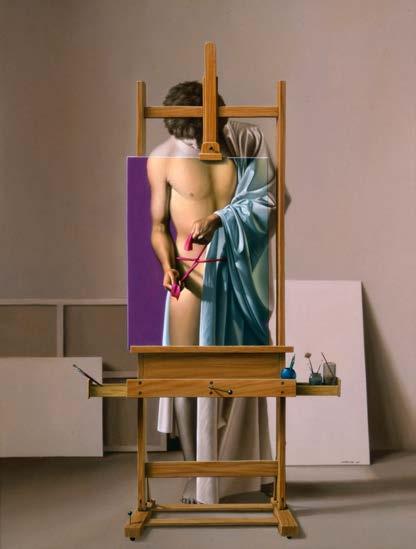
82 RETROSPECTIVA DE ENRIQUE CAMPUZANO OPUS 145 Óleo en tela 80x60 cm. 1986

83 FIGURA HUMANA OPUS 174 Óleo en tela 130x100 cm. 1987

84 RETROSPECTIVA DE ENRIQUE CAMPUZANO OPUS 176 Óleo en tela 130x100 cm. 1987

85 FIGURA HUMANA OPUS 182 Óleo en tela 55x40 cm. 1988

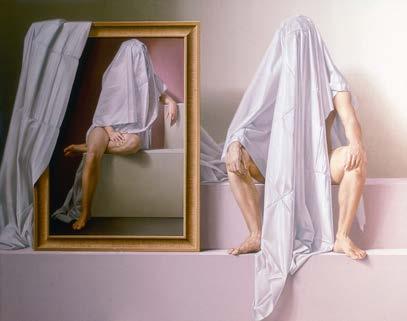
86 RETROSPECTIVA DE ENRIQUE CAMPUZANO OPUS 259 Óleo en tela 120x150 cm. 1990 OPUS 202 Óleo en tela 100x130 cm. 1989

87 FIGURA HUMANA OPUS 302 Óleo en tela 65x54 cm. 1991
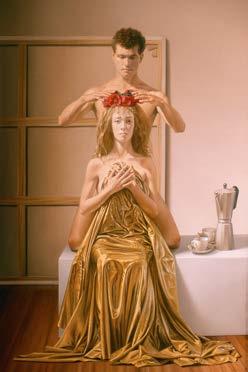

88 RETROSPECTIVA DE ENRIQUE CAMPUZANO
1990
OPUS 261 Óleo en tela 190x130 cm.
1990
OPUS 256 Óleo en tela 73x60 cm.
OPUS 263 Óleo en tela 150x120 cm.
1990
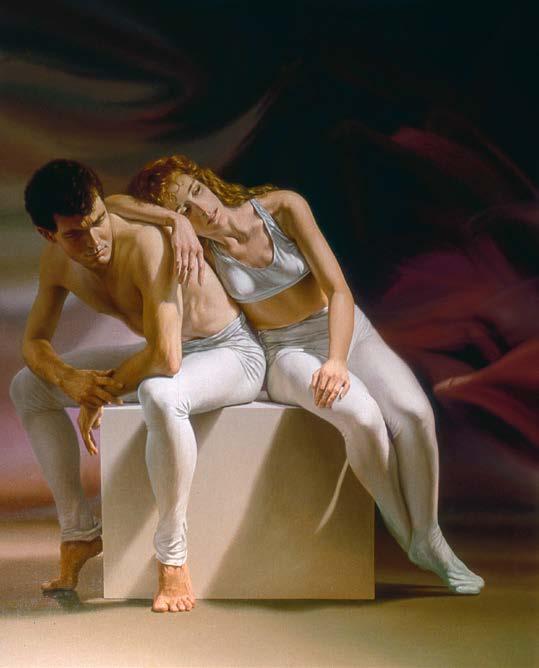
89 FIGURA HUMANA
OPUS 279 Óleo en tela
89x116 cm.

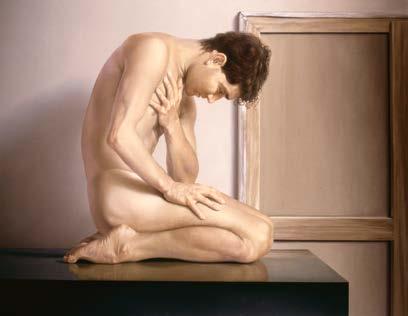
1991
OPUS 285 Óleo en tela
73x100 cm.
1991
90 RETROSPECTIVA DE ENRIQUE CAMPUZANO
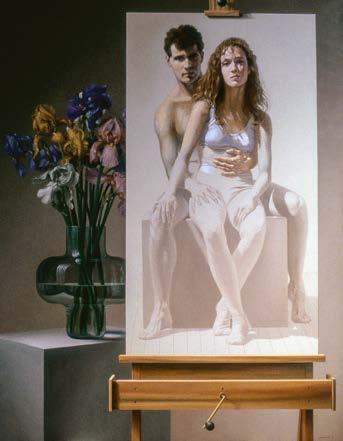
91 FIGURA HUMANA OPUS 264 Óleo en tela 150x120 cm. 1990

92 RETROSPECTIVA DE ENRIQUE CAMPUZANO OPUS 292 Óleo en tela 100x130 cm. 1991

93 FIGURA HUMANA OPUS 260 Óleo en tela 100x130 cm. 1990
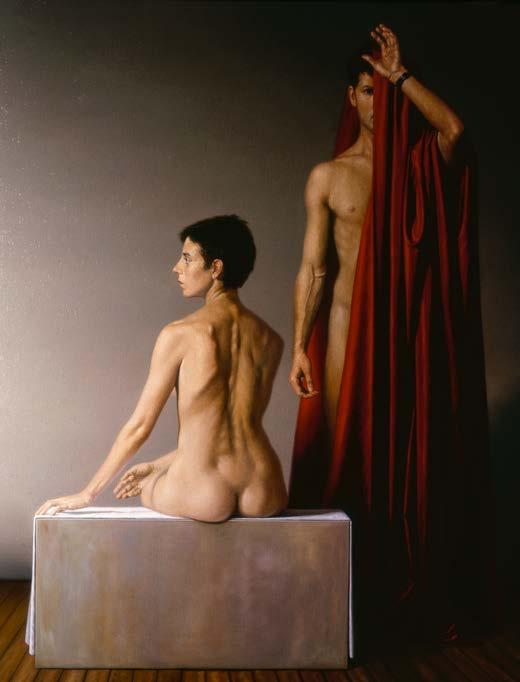
94 RETROSPECTIVA DE ENRIQUE CAMPUZANO


95 FIGURA HUMANA
1991
1992
1991
OPUS 310 Óleo en tela 150x120 cm.
OPUS 342 Óleo en tela 100x81 cm.
OPUS 313 Óleo en tela 100x81 cm.

96 RETROSPECTIVA DE ENRIQUE CAMPUZANO OPUS 344 Óleo en tela 100x130 cm. 1992
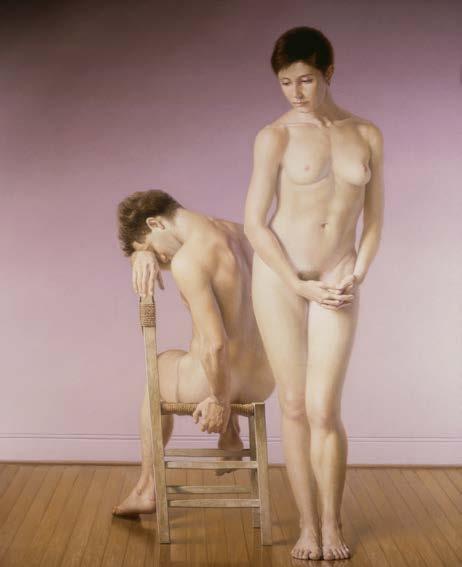
97 FIGURA HUMANA OPUS 346 Óleo en tela 150x120 cm. 1992
OPUS 349 Óleo en tela
114x146 cm.
1992
OPUS 353 Óleo en tela
73x100 cm.

1992
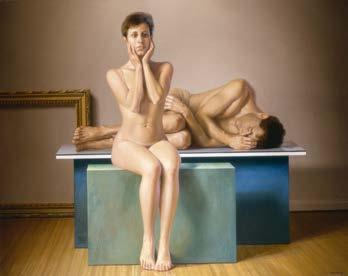
98 RETROSPECTIVA DE ENRIQUE CAMPUZANO

99 FIGURA HUMANA OPUS 364 Óleo en tela 114x145 cm. 1993

100 RETROSPECTIVA DE ENRIQUE CAMPUZANO OPUS 374 Óleo en tela 130x100 cm. 1993

101 FIGURA HUMANA OPUS 407 Óleo en tela 73x100 cm. 1994
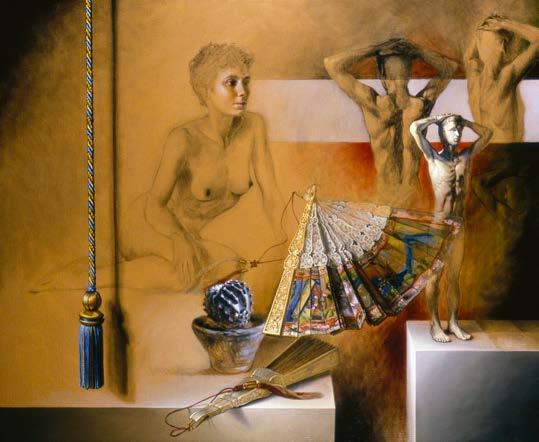
102 RETROSPECTIVA DE ENRIQUE CAMPUZANO
1996
OPUS 447 Óleo en tela 81x100 cm.
1997
OPUS 378 Óleo en tela 100x81 cm.

103 FIGURA HUMANA

104 RETROSPECTIVA DE ENRIQUE CAMPUZANO OPUS 338 Óleo en tela 60x81 cm. 1992


105 FIGURA HUMANA
OPUS 617
2004
Óleo en tela sobre tabla 50x40 cm.
2017
OPUS 940 Óleo en tela sobre tabla 50x40 cm.

106 RETROSPECTIVA DE ENRIQUE CAMPUZANO OPUS 888 Óleo en tela 130x100 cm. 2014

107 FIGURA HUMANA OPUS 894 Óleo en tela 146x114 cm. 2014



108 RETROSPECTIVA DE ENRIQUE CAMPUZANO
OPUS 929 Óleo en tela 100x81 cm. 2016
OPUS 931 Óleo en tela 100x81 cm. 2016
OPUS 930 Óleo en tela 100x81 cm. 2016

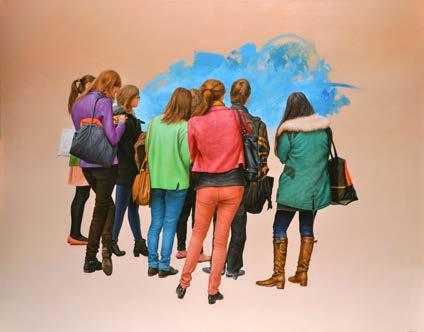
109 FIGURA HUMANA OPUS 927 Óleo en tela 120x150 cm. 2016 OPUS 928 Óleo en tela 120x150 cm. 2016

110 RETROSPECTIVA DE ENRIQUE CAMPUZANO OPUS 941 Óleo en tela 130x100 cm. 2017

111 FIGURA HUMANA OPUS 942 Óleo en tela 130x100 cm. 2017

112 RETROSPECTIVA DE ENRIQUE CAMPUZANO BOCETOS Óleo en tela 50x40 cm. c/u 2016

113 FIGURA HUMANA
CITAS PICTÓRICAS

116 RETROSPECTIVA DE ENRIQUE CAMPUZANO
“Crear una obra propia es una tarea que me obliga a barajar infinidad de posibles combinaciones que deben ser analizadas y, por descarte, llego a la menos mala, supongo. En cambio, copiar es como correr feliz por la orilla de la playa de la mano de mi madre”.
Por Jazmín Lolas
LEos museos, especie de debilidad que lo define en parte, son algunos de los espacios donde el artista ha aplicado su afición de gran estudioso de las conductas humanas. Así es como ha podido desarrollar la serie de telas que muestran la irrupción de los teléfonos celulares en recintos “sagrados” del arte y también descubrir qué obras son las que más atraen al público: “La gente se detiene principalmente ante los cuadros tradicionales y me he dado cuenta de que siempre que tomo elementos de ellos y los incorporo a mis trabajos, el cuadro mejora”.
Las citas o referencias a piezas de autores célebres son abundantes dentro de la producción del pintor. Es un ejercicio que ha integrado a su rutina desde siempre –principalmente a partir de la obra de Velázquez– y con bastante placer, por lo demás: “Viviría copiando las esculturas y pinturas que llenan las salas de los museos. Es muy divertido y entretenido. Dentro de mí, el copista es el que está más despierto, pero he tenido que hacer piezas originales porque las copias en Chile no están bien vistas, no existe la costumbre de coleccionarlas ni son valoradas como en Europa, donde hay excelentes copistas”.
“Siempre me gustó la pintura de otros, así que he tratado de acercarme a ellos, no de imitarlos. A Velázquez le tengo especial admiración y aprecio, porque siendo un exponente del Barroco dio un paso hacia lo que después se conoció como Impresionismo. Fue un adelantado, un ser humano especial. Si uno lee su historia, se da cuenta de que lo que quería era llegar a ser un hombre de Palacio. Pintó poco porque conversaba mucho con el rey. Creo que había una amistad íntima entre ellos,
porque el monarca sabía que él no usaría esa información en su contra o para conseguir beneficios. Se entiende, por lo tanto, que haya podido pintar como lo hizo, ya que no tenía que atender más clientes que a su soberano, a quien, al parecer, le gustaba su estilo. Todos los pintores de caballete que conozco han sido influidos por él, somos una congregación que va detrás de Velázquez”.
Cada vez que Campuzano ha integrado a su trabajo personajes de Velázquez o de otro pintor del cual se considere de cierto modo un discípulo, lo ha hecho de manera que permanecen en un escenario similar al que ocupaban originalmente (como sucede con la Venus), pero en ningún caso idéntico, o salen de su contexto para ubicarse en otro muy distinto: cambian la escena, la atmósfera y la época. Un ejemplo son los bolsos transparentes en cuyo interior ha puesto a la Infanta o a los enanos. Son obras de las que Armando Álvarez Bravo ha dicho que ejemplifican la capacidad del artista “para captar lo fijo y lo cambiante de la realidad de las cosas y el paso del tiempo”.
“Como sé que no puedo contarme como uno más entre mis maestros, me nutro de ellos. Cada uno me ha enseñado cosas distintas. Sigo considerándome un aprendiz y no lo digo por falsa modestia. Hago lo que hizo Da Vinci, que se inspiraba en quienes había elegido como guías y creaba algo parecido, pero tratando de imprimirle su personalidad. En la historia del arte, nadie, desde las cuevas de Altamira en adelante, ha sido completamente original, la creación no es espontánea. Todos tenemos padres y abuelos artísticos, todos hemos mirado hacia atrás y hacia el lado para aprender y luego enriquecer nuestra propia obra”.
117 CITAS PICTÓRICAS
OPUS 595 Óleo en tela 130x100 cm.
2003
OPUS 181 Óleo en tela
100x130 cm.
1988

OPUS 224
Óleo en tela
100x130 cm.
1989
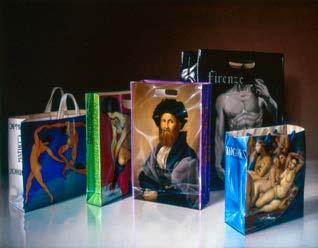
118 RETROSPECTIVA DE ENRIQUE CAMPUZANO

119 CITAS PICTÓRICAS OPUS 237 Óleo en tela 120x150 cm. 1989

120 RETROSPECTIVA DE ENRIQUE CAMPUZANO OPUS 401 Óleo en tela 100x130 cm. 1994

121 CITAS PICTÓRICAS OPUS 251 Óleo en tela 130x130
1990
cm.

122 RETROSPECTIVA DE ENRIQUE CAMPUZANO OPUS 543 Óleo en tela 114x146 cm. 2001

123 CITAS PICTÓRICAS OPUS 598 Óleo en tela 130x180 cm. 2003

124 RETROSPECTIVA DE ENRIQUE CAMPUZANO OPUS 379 Óleo en tela 100x130 cm. 1993

125 CITAS PICTÓRICAS OPUS 380 Óleo en tela 100x130 cm. 1993

126 RETROSPECTIVA DE ENRIQUE CAMPUZANO OPUS 194 Óleo en tela 100x130 cm. 1988

127 CITAS PICTÓRICAS OPUS 458 Óleo en tela 81x100 cm. 1996

128 RETROSPECTIVA DE ENRIQUE CAMPUZANO
130x100
2001
OPUS 550 y 552 Óleos en tela
cm. c/u.

129 CITAS PICTÓRICAS OPUS 551 Óleo en tela 117x147 cm. 2001
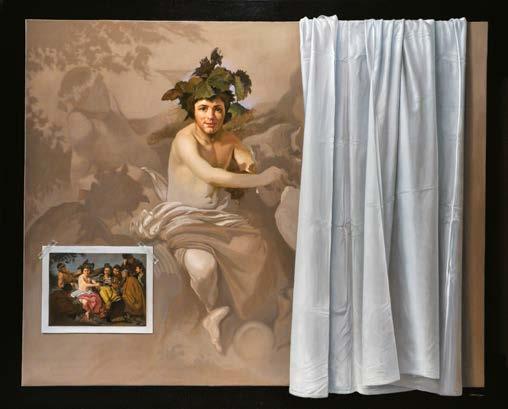
130 RETROSPECTIVA DE ENRIQUE CAMPUZANO OPUS 539 Óleo en tela 120x150 cm. 2000

131 CITAS PICTÓRICAS OPUS 602 Óleo en tela 100x130 cm. 2003
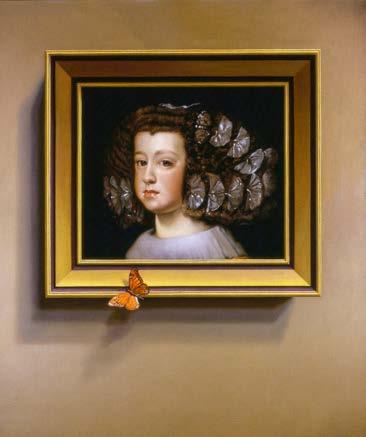
132 RETROSPECTIVA DE ENRIQUE CAMPUZANO OPUS 596 Óleo en tela 100x81 cm. 2003

133 CITAS PICTÓRICAS OPUS 597 Óleo en tela 146x114 cm. 2003

134 RETROSPECTIVA DE ENRIQUE CAMPUZANO OPUS 719 Óleo en tela 81x100 cm. 2007

135 CITAS PICTÓRICAS OPUS 381 Óleo en tela 81x100 cm. 1993

136 RETROSPECTIVA DE ENRIQUE CAMPUZANO
OPUS 821
2011
Autorretratos de Mary Cassatt, Aurélia de Souza y Berthe Morisot Óleo en tela 100x130 cm.

137 CITAS PICTÓRICAS OPUS 822 Óleo en tela 100x130 cm. 2011
Autorretratos
100x130 cm.
2011
Autorretratos

100x130 cm.
2011

138 RETROSPECTIVA DE ENRIQUE CAMPUZANO
OPUS 823
de: Velázquez, Rubens, Rembrandt. Óleo en tela
OPUS 825
de: Edward Hooper, Mark Tobey y Romaine Brooks. Óleo en tela


139 CITAS PICTÓRICAS
OPUS 827
Autoretratos de: Rosalba Carriera, J-B Siméon Chardin, M. Quentin de La Tour. Óleo en tela 100x130 cm. 2011 OPUS 877 Óleo en tela 100x130 cm.
2013
DISEÑO TEATRAL

142 RETROSPECTIVA DE ENRIQUE CAMPUZANO
TEuve la fortuna de conocer a Enrique Campuzano en los inicios de mi carrera periodística, lo que me ha permitido disfrutar de su entrañable amistad durante muchos años. Por ello no pude negarme cuando me pidió que escribiera de su amor por el teatro y la escenografía, sobre el que habíamos conversado en tantas ocasiones. Además, esta solicitud tenía una sólida base ya que, sin proponérmelo, serví de agente para que Enrique pudiera cumplir uno de sus más grandes anhelos: crear los decorados de alguna obra para el Municipal de Santiago.
También me parece fundamenal dejar constancia de su aporte a este arte a través de sus colaboraciones al Teatro, pues, aunque breve, su incursión en él constituye un legado y un ejemplo de profesionalismo que no deberían perderse. Porque si bien sus escenificaciones contaron con una mirada muy original, un humor y esa pasión por la belleza que raramente se despliegan, cada una supo respetar el espíritu de la pieza, sin traicionar jamás su esencia y su lucimiento.
“Soy un convencido de que la puesta en escena debe estar al servicio de la obra y no ser un medio publicitario para el responsable del diseño. Cada creación viene cargada de mensajes, que quizás pueden no ser captados por la gran mayoría, pero que deben ser develados. Todos mis maestros me enseñaron que mis trabajos debían ser pensados para aquellos, muy pocos, capaces de notarlo”.
Desgraciadamente, el Teatro no guardó los decorados ni las maquetas de sus puestas, por lo que sólo queda recordarlas a través de los testimonios que quedaron en la prensa.
Durante los años en que, paralelo a su trabajo en el banco, se había relacionado con el Municipal a través del Club de Amigos de la Ópera (donde colaboraba como diagramador, fotógrafo y publicista de la revista “Ópera Chile”), en varias ocasiones Enrique intentó llegar a ese escenario presentando proyectos en los concursos a los que cada cierto tiempo convocaba. Siempre salió segundo y la vez que ganó con “Andrea Chenier”, lo hicieron rehacer el trabajo para luego rechazarlo.
Desalentado, decidió olvidar estos afanes y dedicarse por entero
LA MÁGICA AVENTURA TEATRAL
Por Susana Ponce de León G.
a la pintura. Pero dicen que cuando se desea realmente alguna cosa y se pone todo el sentimiento en ello, el deseo suele cumplirse. Sea como sea, en este caso sucedió algo así.
La primera señal apareció del lado más inesperado, según recuerda el artista: “Al día siguiente de la inauguración de una de mis primeras exposiciones en Galería Praxis, llegó un señor al que yo no conocía y me saludó tratándome como colega. Le pregunté quién era, suponiéndolo pintor. ‘No –me respondió- soy dramaturgo, me llamo Fernando Debesa y hago teatro. Tus pinturas son escenográficas, por eso sé que somos colegas’. Por supuesto, quise saber más de mi interlocutor y ahí me enteré de que no sólo se trataba del autor de la emblemática obra ‘Mama Rosa’, sino también era escenógrafo, vestuarista, director y cofundador del Teatro de Ensayo de la Universidad Católica, Premio Nacional de Teatro 1981, escritor, académico, columnista… En fin, quedé más que agradecido que alguien como él me diera el título con el que había soñado tanto y que hacía tiempo había enterrado”. La segunda y decisiva confirmación surgió una tarde en que Iván Nagy, el gran artista húngaro refundador del Ballet de Santiago, y Marilyn Burr, su esposa, estaban en mi casa y él encontró el catálogo de una exposición de Enrique. Lo examinó largamente y, por sus comentarios, me di cuenta que había captado de inmediato que esas obras –siempre tan mal catalogadas en Chile como “hiper-realistas”– iban mucho más allá, ahondando “en la otra realidad de lo real”, alimentadas por un exquisito bagaje, largas y profundas reflexiones sobre el arte y la vida, y un humor surrelista, corrosivo e irresistible. “Quiero conocer a este artista –me dijo Iván- me han conmovido profundamente la belleza y trascendencia de su trabajo. Por otro lado, hay algo en su pintura que es muy teatral y presiento que podría ser un excelente escenógrafo”. Por cierto, los contacté de inmediato. Iván fue al taller de mi amigo y le compró un cuadro. Luego le contó que siempre había querido ser pintor, pero que las circunstancias en las que le tocó crecer (la ocupación soviética en Hungría) imposibilitaron que cumpliera su sueño: “Sin darnos cuenta se creó una comunicación amistosa que nos llevó a reunirnos periódicamente y así, él y Marilyn se integraron a mi grupo de amistades”, recuerda Enrique.
143 DISEÑO TEATRAL
SIN OPUS Óleo en tela 55x40 cm 1982
“Ladislao Cheney e Iván Nagy, dos magiares (húngaros) han sido fundamentales en mi desarrollo artístico. Recibí de ellos gestos de respeto y generosidad, impensables en la mentalidad chilena.”
En esos días, Iván trabajaba en el estreno de “Tema y variaciones”, un ballet corto con música de Tchaikovsky y coreografía de George Balanchine, que se acostumbra bailar sin decorados. Pero él quería innovar y de paso probar como escenógrafo a su nuevo amigo, a quien explicó que la obra no tiene argumento y es técnica pura, rígida. Ni siquiera está permitido que los bailarines sonrían.

Enrique y Pablo Núñez (a cargo del vestuario) estudiaron la música y el estilo coreográfico, tratando de descubrir qué requerían esos dos elementos para ser potenciados. Con su enfoque irónicamente certero, lo primero que Enrique pensó para resaltar la estricta simetría del ballet fue hacer un contrapunto, diseñando una escenografía fugada hacia arriba: “Propuse a Pablo reproducir las columnas de la sala del Municipal, y como el ballet es cuadrado, quise hacerlo redondo. Y como es rígido, quise poner un trapo, como un pedazo de cortina, flotando para que quebrara la rigidez y así ésta se concentrara totalmente en la coreografía. Y Pablo decidió que siendo tan frío el concepto de la obra, había que darle temperatura con el color. Preparó una muestra que se usó para toda la producción, generando un entendimiento que para mí no tiene precio: en una función, nos ubicamos con Pablo al final de la sala para apreciar la puesta en su totalidad y él me dijo que estaba muy sorprendido porque todo se veía tan armónico que parecía hecho por una sola mano. Para mi eso fue el gran premio”.

Por cierto, habría mucho más que agregar respecto al aporte de esta apuesta, pero creo que puede resumirse con el beneplácito y sorpresa que su estreno provocó en los balletómanos.
Al abrirse la cortina, un Campuzano de 12 por 8 metros emergió del escenario con ese enfoque tan personal que distingue hasta el más “inocente” de sus trabajos. Sin muros ni los típicos paisajes, columnas, lámparas, cortina parecían flotar en una circularidad y asimetría surrealistas, mientras que la luz irradiaba de los cuerpos de los intérpretes, iluminando la penumbra. Una maravilla para quienes tuvimos la suerte de verla.
En vista de que la “prueba” funcionó tan bien, Nagy le ofreció hacer los decorados para “El lago de los cisnes”. El mismo equipo preparó una versión ajustada por Iván y Marilyn para esta pieza capital de la danza clásica. Extremadamente respetuoso de la tradición y del valor de cada obra que la contiene, Iván consideraba que este título era “el brillante de la historia del ballet” y había que protegerlo y mimarlo.

“Decidimos con Pablo que el decorado sería claustrofóbico, gótico y en blanco y negro con plata, y que todo el colorido estaría en los innumerables trajes a que obliga el tema. El iluminador podía usar suaves acentos de color para la temperatura espacial de cada escena”, puntualiza Campuzano.
Siguiendo la intención del coreógrafo, el punto de partida de la puesta fue el drama personal de Sigfrido y la reina, su madre. Por ello, Enrique pidió al vestuarista que los vistiera de púrpura (que en el lenguaje psicológico de los colores señala a los neuróticos), otorgándoles una unidad que denotara la edípica dependencia del protagonista.
Así como los trajes, muchos elementos en esta puesta guían para entender las relaciones y la situación de los personajes principales. Por ejemplo, las gárgolas, que nos hablan de la presencia de elementos violentos y agresivos que insisten en presionar a Sigfrido; el Palacio, una especie de jaula, que sería el sistema social, la institución que lo oprime desde su nacimiento; o el lago que está siempre presente, porque el agua y el cielo abierto simbolizan la libertad, el cambio a que aspira el príncipe; y también, el paso a otra dimensión, aquella donde Sigfrido encontrará a Odette, el cisne que representa la comunión espiritual que él tanto ansía.
Una vez al tanto de la nueva propuesta, Nagy aseguró a la prensa que sería un espectáculo que daría que hablar por la belleza de su puesta en escena. Y así fue: “El escenógrafo y pintor Enrique Campuzano merece elogios aparte. Su concepción artística fue magnífica y poética: gusto, calidad, brillo, misterio y lumino -
144 RETROSPECTIVA DE ENRIQUE CAMPUZANO 1 2 3
1/Campuzano con la compañía en el estreno de “Tema y Variaciones”, 1997. 2/Pablo Nuñez y Enrique en un ensayo del ballet, gentileza de El Mercurio. 3/Enrique y Marcela Goicoechea, bailarina estrella del Ballet Municipal de Santiago.
sidad al mismo tiempo. Logra efectos fantásticos con un lago de fondo que delata su afinado ojo de pintor, con un cielo pleno de nubes que tiene dramatismo propio. Notable la ascensión de la luna al comienzo del último acto”, opinó la crítica de danza Carmen Gloria Larenas en “El Mercurio”.
A “Lago” siguió “Coppélia” en la versión del coreógrafo británico Ronald Hynd. “También esta obra esconde, como un bello pastel glaseado y dulce, el centro amargo del rechazo al distinto. Coppélius, un ‘loco’ que busca un ideal humano recreado por medios mecánicos, es motivo de crueles burlas por la cultivada simpleza espiritual de gente rústica. Abordamos la puesta como un cuento para niños; cercana a un teatro de marionetas, con decorados casi campesinos”.
Para enfatizar lo extravagante de todo el asunto, escenógrafo y vestuarista acordaron cubrir la vulgaridad del pueblo con filetes de oro. Para la casa de Coppélius, Enrique diseñó un frontis digno de un palacio de Budapest, con un Atlante a la entrada. Y el bar y la casa de Swanilda se adornaron con vitrales que sólo se encendían al final. En el interior del taller de Coppélius, el camastro aparecía con un cobertor azul medio intenso con flores de lis doradas, pero muy deteriorado.
“Ronald fue el único que notó los irónicos detalles, y me dijo que no había visto antes a un Coppélius tan ‘ennoblecido’”, acota Enrique.
Desgraciadamente, muchos de los preciosos bocetos y maquetas de esta escenografía, plenos de significados, donde el realismo y lo abstracto se conjugaban para entrar en el juego casi surrealista de la propuesta, al pasar al escenario perdieron gran parte de su efectividad por el defectuoso trabajo de talleres y, sobre todo, por la mala iluminación, que malogró los efectos de encantadora magia y saturó el escenario, desdibujando en varias ocasiones a los bailarines.
Esta maravillosa aventura teatral terminó para Enrique con la versión de Iván para “La Sylphide”, uno de los títulos más famosos
del ballet romántico, creado para la célebre Marie Taglioni por su no menos célebre padre, el coreógrafo Filippo Taglioni. En él, esta diva de la danza comenzó a bailar por primera vez “de puntilla”, para poder crear esa sensación etérea, indispensable para historias de esta naturaleza.


El cuento gira en torno a la amargura de un personaje femenino: Magde, una bruja –para desterrar cualquier duda– que se empecina en que las conductas humanas se encaminen por lo que ella considera “el camino correcto”. Maldice al pobre James, que en una ensoñación enloquece de amor por una sílfide a la que sólo él puede ver, pero no puede tocar, y la que nunca lo mira (no está en su naturaleza). Enamorado sin remedio de esta criatura, James la persigue al bosque. “La trama es tan descocada que Iván pidió una puesta realista para equilibrar el asunto. El acto uno es el interior de un casa de veraneo en medio del bosque, casi en estado de abandono. El acto dos se sitúa en la profunda foresta, con brujas y caldero humeante, y pesadilla con chicas volando. Me aproveché de esa libertad para poner en aprietos no solo a los pintores, carpinteros y al taller de fierros del Municipal, sino también a los creadores de utilería, tramoyistas y al iluminador. Este pequeño ballet es sorprendentemente complejo en sus efectos especiales, un banquete para el diseñador inmisericorde. Qué lástima que la vida no sea así de entretenida”, reflexiona Enrique, y finaliza sus recuerdos sobre esta mágica etapa de su carrera artística con una anécdota que retrata a Nagy de cuerpo entero:

“Luego de mostrar este montaje en Santiago, Iván quiso llevarlo al Ballet de Budapest, donde me invitó. Durante una semana paseamos por esa ciudad en la que tantas penurias había vivido junto a su familia bajo la bota rusa. Caminando por la avenida principal, le conté la gran impresión que me había provocado su versión de ‘El lago de los cisnes’ (mi ballet favorito). Él escuchó pacientemente mi ‘apología’, y con expresión indescriptible, me respondió ‘Don´t kiss my ass’”.

145 DISEÑO TEATRAL
4/ Tamás Solymosi, Enrique y Valentina Chepatcheva. 5/Enrique y Carlos Acosta, primer bailarín del Royal Opera House. 6/Iván Nagy, Alezja Popova y Enrique el día del estreno de “Lago de los Cisnes”, 1998. 7/ Iván y Enrique en Budapest, 2009.
4 5 6 7

146 RETROSPECTIVA DE ENRIQUE CAMPUZANO OPUS 730 Óleo en tela 100x81 cm 2008


147 DISEÑO TEATRAL
OPUS 723 Óleo en tela 55x40 cm.
2008
OPUS 945 Óleo en tela 55x40 cm. 2017



148 RETROSPECTIVA DE ENRIQUE CAMPUZANO
Bocetos para “Coppélia”
“Golondrina” para “Pájaros de Neruda”


149 DISEÑO TEATRAL
Telón de Boca pintado
foto de: Roberto Edwards

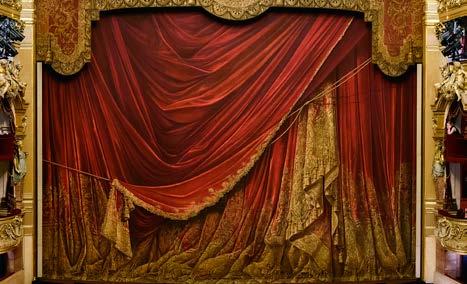
150 RETROSPECTIVA DE ENRIQUE CAMPUZANO
Telón para “La Sylphide”, inspirado en el telón de la Ópera de París, Garnier (arriba), donde se estrenó el ballet.

151 DISEÑO TEATRAL



152 RETROSPECTIVA DE ENRIQUE CAMPUZANO
1998
Bocetos para “El Lago de los Cisnes”.

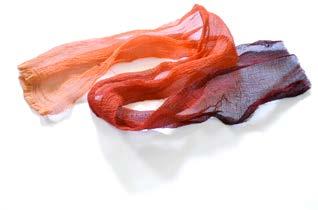
153 DISEÑO TEATRAL
Boceto para “Tema y Variaciones” con muestra de color

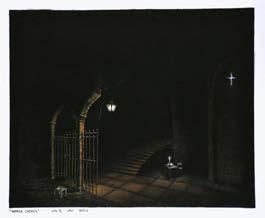


154 RETROSPECTIVA DE ENRIQUE CAMPUZANO
1985
Bocetos de la ópera “Andrea Chenier”

155 DISEÑO TEATRAL Boceto para la ópera “Los Puritanos” 1979
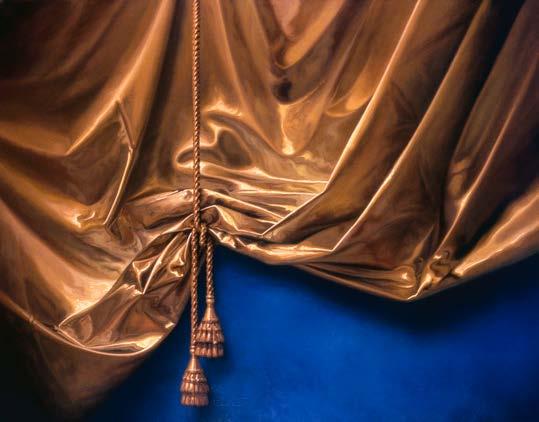
156 RETROSPECTIVA DE ENRIQUE CAMPUZANO OPUS 737 Óleo en tela 100x130 cm. 2008
GRUPO DE OBRAS QUE FORMAN PARTE DE LA EXPOSICIÓN “ESCENARIOS” DE LEGACY FINE ART .
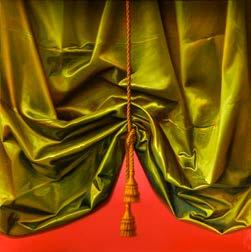



157 DISEÑO TEATRAL OPUS 749 Óleo en tela 100x130 cm. 2008 OPUS 742 Óleo en tela 100x130 cm. 2008 OPUS 739 Óleo en tela 100x130 cm. 2008
740 Óleo en tela 100x130 cm. 2008
OPUS
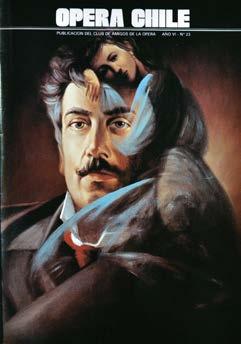

158 RETROSPECTIVA DE ENRIQUE CAMPUZANO PORTADAS PARA LA REVISTA OPERA CHILE 1981
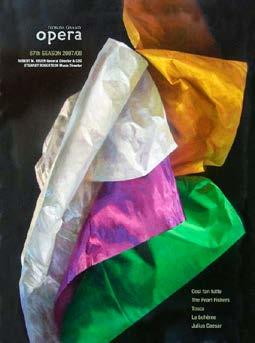
159 DISEÑO TEATRAL
OPUS 704
Óleo en tela, usado para ilustrar la portada del Season Book de la Florida Grand Opera de Miami. 81x100 cm. 2007

160 RETROSPECTIVA DE ENRIQUE CAMPUZANO OPUS 824 Óleo en tela 81x100 cm. 2011

161 DISEÑO TEATRAL BOCETO
2017
PARA “LAGO” Óleo en tela 91x123,5 cm.
PAPELES

164 RETROSPECTIVA DE ENRIQUE CAMPUZANO
OPUS
913
Óleo en tela 180x130 cm.
AEl revés de aquellos autores que basan su trabajo en una sola idea y la desarrollan experimentando sólo variaciones durante su trayectoria, Enrique Campuzano necesita que en su oficio exista diversidad: “Habría sido una tortura para mí tener que pintar el mismo tema durante mucho tiempo”.
Esa es una de las razones de la heterogeneidad que caracteriza su voluminosa producción. Pero hay otra: el artista considera que su obra completa responde a una práctica cuya meta es perfeccionar las distintas áreas del quehacer pictórico: “Cada uno de mis cuadros es un ejercicio para el que viene. Diría que aún no he pintado el mejor; quizás lo consiga al final de mi carrera”.
Así como en ciertos momentos fueron los bodegones y los retratos los que le dieron la posibilidad de ejercitarse como él pretendía, en otros, la oportunidad apareció en los papeles. Campuzano recuerda que surgieron como motivo de la serie
de telas que elaboró citando a Velázquez, uno de sus principales inspiradores.
“Entonces resolví hacer un acto de humildad. Había trabajado acabadamente la forma, pero, en general, sobre todo en los comienzos, mi estilo era bastante tenebrista. Así que ahora quería investigar decididamente las posibilidades del color, llevándolas hasta el extremo”. Y el elemento que resultó más adecuado para ese objetivo fue el papel de volantín, que a lo largo de quince años ha originado algunas de sus pinturas más reconocibles. Vistosísimo, este objeto ha sido plasmado por el artista de modo que flota o está doblado dentro de jarrones o plegado sobre un cordel, entre otras composiciones.
165 PAPELES
El historiador del arte y curador chileno Juan Manuel Martínez considera que este tipo de cuadros son, dentro de la obra del autor, los que exhiben “mayor libertad, proyección plástica y vuelo creativo. Dan cuenta de un trabajo muy fino y de una gran habilidad plástica. Su obra en general muestra una gran habilidad pictórica”. 2015
“Descubrí que pintar papeles de colores flotantes, aparte de ser un ejercicio de ilusión óptica estupendo, aparentemente produce un efecto narcotizante en el observador”.
Por Jazmín Lolas
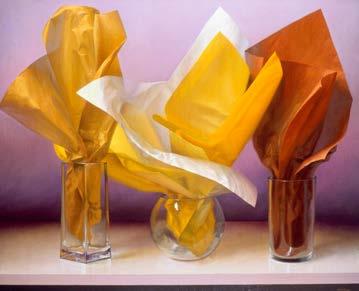
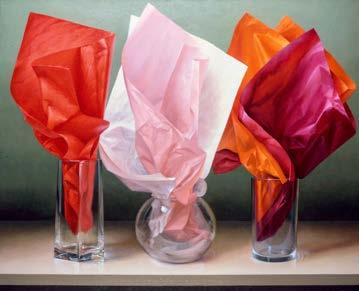
166 RETROSPECTIVA DE ENRIQUE CAMPUZANO
Óleo en tela 81x100 cm. 2006
Óleo en tela 81x100 cm. 2006
OPUS 677
OPUS 678

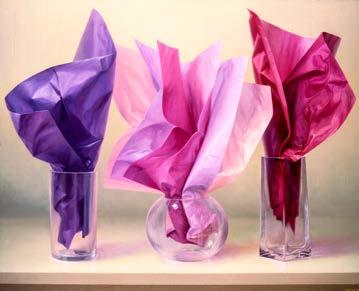
167 PAPELES OPUS 681 Óleo en tela 81x100 cm. 2006 OPUS 683 Óleo en tela 81x100 cm. 2006

168 RETROSPECTIVA DE ENRIQUE CAMPUZANO OPUS 690 Óleo en tela 130x180 cm. 2006

169 PAPELES OPUS 681 Óleo en tela 81x100 cm. 2006


170 RETROSPECTIVA DE ENRIQUE CAMPUZANO
OPUS 710 Óleo en tela 100x130 cm. 2007
OPUS 709 Óleo en tela 100x130 cm. 2007


171 PAPELES OPUS 707 Óleo en tela 81x100 cm. 2007 OPUS 682 Óleo en tela 100x130 cm. 2006

172 RETROSPECTIVA DE ENRIQUE CAMPUZANO OPUS 712 Óleo en tela 150x150 cm. 2007

173 PAPELES OPUS 832 Óleo en tela 100x130 cm. 2011


174 RETROSPECTIVA DE ENRIQUE CAMPUZANO
2012
OPUS 840 Óleo en tela 50x40 cm.
2012
OPUS 843 Óleo en tela 50x40 cm.

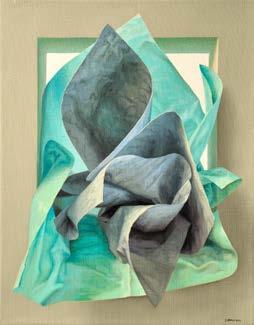
175 PAPELES
OPUS 842 Óleo en tela 50x40 cm. 2012
OPUS 844 Óleo en tela 50x40 cm. 2012

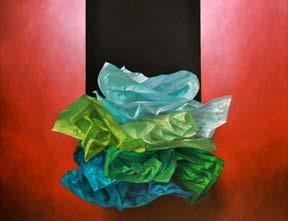
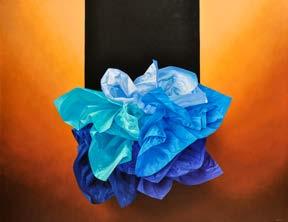
176 RETROSPECTIVA DE ENRIQUE CAMPUZANO
OPUS 879 Óleo en tela 120x150 cm.
2013
OPUS 878 Óleo en tela 120x150 cm.
2013
2013
OPUS 880 Óleo en tela 120x150 cm.
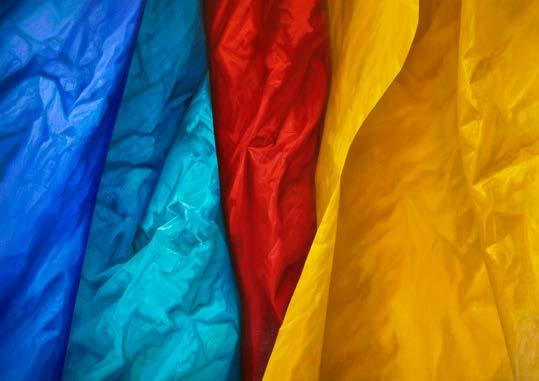
177 PAPELES OPUS 900 Óleo en tela 130x180 cm. 2014

178 RETROSPECTIVA DE ENRIQUE CAMPUZANO OPUS 905 Óleo en tela 100x130 cm. 2015

179 PAPELES OPUS 895 Óleo en tela 120x150 cm. 2014

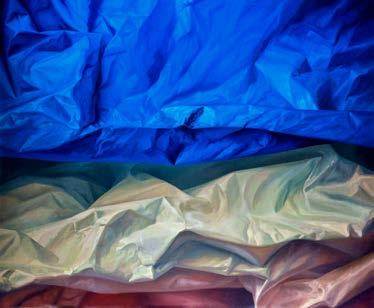
180 RETROSPECTIVA DE ENRIQUE CAMPUZANO
2015
OPUS 902 Óleo en tela 120x150 cm. 2015 OPUS 901 Óleo en tela 120x150 cm.

181 PAPELES OPUS 899 Óleo en tela 120x150 cm. 2014

182 RETROSPECTIVA DE ENRIQUE CAMPUZANO OPUS 886 Óleo en tela 81x100 cm. 2014

183 PAPELES OPUS 939 Óleo en tela 100x130 cm. 2017

184 RETROSPECTIVA DE ENRIQUE CAMPUZANO OPUS 834 Óleo en tela 100x130 cm. 2011
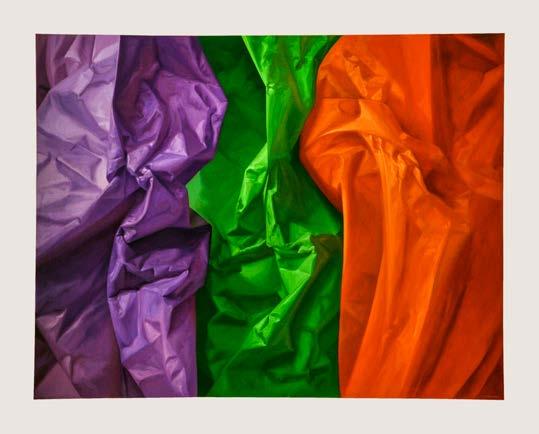
185 PAPELES OPUS 912 Óleo en tela 120x150 cm. 2015


186 RETROSPECTIVA DE ENRIQUE CAMPUZANO
Óleo
120x150 cm. 2015
OPUS 916
en tela
Óleo
100x130 cm. 2017
OPUS 938
en tela

187 PAPELES OPUS 759 Óleo en tela 120x150 cm. 2009

188 RETROSPECTIVA DE ENRIQUE CAMPUZANO OPUS 839 Óleo en tela 130x100 cm. 2012

189 PAPELES OPUS 761 Óleo en tela 130x100 cm. 2009
CURRÍCULUM
191 PAPELES
ENRIQUE CAMPUZANO
Curriculum Vitae Exposiciones Individuales
1948
Nace en Iquique, Chile (Padre español y Madre Chilena).
1953
Estudia en el Colegio Salesiano.
1963-69
Realiza diseños para teatro.
1965-82
Trabaja en una institución bancaria.
1970
Se traslada a Santiago para estudiar disciplinas artísticas; Puesta en escena. Fotografía teatral. Diseño Gráfico, Historia de la Pintura, Dibujo, Anatomía y Composición.
1975
Técnica del óleo con el pintor Ladislao V. Cheney.
1979-85
Realiza diseños de escenografía para Ballet y participa en concursos de Escenografía y Vestuario para Opera.
1996-09
Diseños de Escenografía para el Ballet de Santiago y Teatro.
Premios
1984
Primer Premio, concurso “Pintando Providencia”.
1987
Premio al tema mejor interpretado, concurso “Palestina vista por Chile”.
1988
Segundo Premio, concurso “Paisaje Urbano, el Centro de Santiago”. Universidad Católica.
2001
Mención Honrosa, concurso “Nest Art”.
2001
Primer Premio otorgado por el público asistente a los conciertos en “Pintando la Música” (Teatro Municipal).
2003
Segundo Premio concurso “Del sartén a la Tela” (Galería Ana María Matthei).
Colecciones Públicas
Museo Fundación Ralli, Punta del Este Uruguay y Santiago de Chile.
Marcelo Narbona, Panamá City.
El Museo del Barrio, Nueva York, Estados Unidos. Ortiz-Gurdian Foundation, Nicaragua.
New World School of the Arts University, Miami, Estados Unidos. Universidad de Talca, Chile.
1983
Universidad de Tarapacá, sede Arica.
1984
Instituto Cultural de Providencia, Santiago.
1984
Sala Gabriela Mistral de La Serena.
1985
Galería Praxis de Santiago.
1988
Galería Praxis de Santiago.
1990
Elite Fine Art, Miami, Estados Unidos.
1992
Elite Fine Art, Miami, Estados Unidos.
1995
Galería Tomás Andreu, Santiago.
2002
Legacy Fine Art de Panamá City.
2003
“Retrato de una Corte” Galería Praxis de Santiago.
2004
The Americas Collection, Coral Gables. Miami, Estados Unidos.
2004
“Pinturas Muestra Retrospectiva”, Sala de Arte Casa Collahuasi, Iquique.
2006
“Papeles de Colores 2004/2006” Legacy Fine Art de Panamá City.
2007
“Arteamericas”, Miami, Estados Unidos.
2007
“One Man Show”, The Americas Collection, Miami, Estados Unidos.

2010
“Escenarios”, Legacy Fine Art de Panamá City.
2010
“Pequeño Formato”, The Americas Collection, Coral Gables, Miami, Estados Unidos.
2016
“Floating Encounters”, The Americas Collection”, Miami, Estados Unidos.
2017
“Retrospectiva”, Universidad de Talca, Talca, Chile.
RETROSPECTIVA DE ENRIQUE CAMPUZANO
Exposiciones Colectivas
1983
“Tres en busca del Realismo”, Casa Nacional de la Cultura, Santiago.
1983
“Primer encuentro de Pintores Contemporáneos”, Museo Tajamares, Santiago.
1985
“Primer encuentro Latinoamericano”, Galería Praxis, Buenos Aire, Argentina.
1985
“Palestina vista por Chile”, Club Palestino, Santiago.
1987
“El Humor”, Galería Casas Verdes, Santiago.
1988
“Realistas de Hoy”, Galería Praxis, Santiago.
1988
“Paisaje Urbano, el Centro de Santiago”, Galería Los Arcos, Universidad Católica, Santiago.
1988
“Urban Landscape: Downtown Santiago”, Security Pacific Gallery, Los Angeles, California.
1989
“Three Chilean Painters”, Multiple Impressions Gallery, Nueva York.
1989
“Mujer, Sueño y Realidad”, Museo Nacional de Bellas Artes, Santiago.
1989
“Eros”, Galería del Cerro, Santiago.
1990
“Art Expo N.Y. 90”, Jacob K. Javitz Convention Center, Nueva York.
1990
“Museo Abierto”, Museo Nacional de Bellas Artes, Santiago.
1991
“Twentieth Anniversary”, 123 Gallery, San Salvador, El Salvador.
1992
“Latín American Spectrum”, Elite Fine Art Gallery, Miami.
1993
“Colectiva de Inauguración”, Galería Tomás Andreu, Santiago.
1993
“La Fruta en el Arte”, Instituto Cultural de Las Condes, Santiago.
1993
“El Espíritu del Arte Latinoamericano”, Galería Valanti, San José de Costa Rica.
1993
“Cinco Pintores Chilenos”, Galería Bernheim, Ciudad de Panamá.
1993
“Latín American Spectrum”, Elite Fine Art Gallery, Miami.
1993
“Casa Latina”, Americas Gallery”, Nueva York.
1994
“Muestra Colectiva”, Elite Fine Art Gallery, Miami.
1994
“Realismo en la Pintura Chilena”, Instituto Cultural de Providencia, Santiago.
1995
“Retratos en la Pintura Chilena”, Instituto Cultural de Providencia, Santiago.
1995
“El taller del Pintor”, Instituto Cultural de Providencia, Santiago.
1996
“Imágenes del Norte Grande”, Arica, Iquique, Antofagasta.
1998
“Summer Group Show”, Elite Fine Art, Miami.
2001
“En Torno al Cuadro”, Galería La Sala, Parque Arauco, Santiago.
2001
“Blanco y Negro”, Galería Ana María Matthei, Santiago.
2001
“Pintando el Agua”, Galería Ana María Matthei, Santiago.
2001
“Pintando la Música”, Teatro Municipal y Galería Ana María Matthei, Santiago.
2001
“Concurso Nest-Art”, Galería Praxis, Santiago.
2003
“Concurso del Sartén a la Tela”, Galería Ana María Matthei, Santiago.
2004
“Historias Cortas”, Galería Praxis, Lima, Perú.
2004
“New Arrivals”, The Americas Collection Gallery, Miami, Estados Unidos.
2005
“Colectiva”, 123 Gallery, San Salvador, El Salvador.
2006
“Solo Realismo”, Galería Praxis, Santiago.
2009
“Joyas Latinoamericanas”, Virginia Miller Gallery, Miami, Estados Unidos.
2009
“Autorretratos”, Colectivo Tres en Suma, Madrid, España.
2009
“Uniendo America”, Galería Códice, Nicaragua.
2010
“Colección Bicentenario”, Instituto Cultural de Providencia, Santiago.
2010 AL 2015
“Arte Ayuda”, Casas lo Matta, Santiago.
2014
“Gems of Art”, The Americas Collection Gallery, Miami, Estados Unidos.
2016
“3 Generaciones”, Museo Ralli, Santiago.
2017
“20 años de Legacy”, Legacy Fine Art, Panamá City.
193 PAPELES
PROLOGUE
Enrique Campuzano / 2017
This book is a retrospective, because at age 70 I have more past than future. I suppose that the painting that I like to do is the result of my story and reflects the influences that form my cultural heritage.
I was born into the ideal family. There was no violence or punishment. Three little girls arrived before me. It is said that my dad was thrilled when the neighborhood midwife, Julia Carpio, told him that the “crown jewels” were male.
My first memories take me to my father’s workshop, a sanctuary installed inside of the house but separate from noisy domestic life, which was muted. Whenever he could, he whisked me away from my crib to teach me how to make shoes for both diseased and healthy feet using high quality materials. His designs were both festive and serious, and all of them were exquisite. It was normal for me to cut myself with the sharp knives used for leather and soles. My father would take a piece of cloth, wrap my finger and stick it in a bottle of rum. I have no memory of feeling pain, but I do remember my mother saying, “You’re going to kill the kid.” We looked at her, surprised.
All four of us went to Salesian schools. My sisters studied with nuns wrapped in lavender-colored rippling cloth that seemed to float over the waxed tiles. I studied with priests who were only aesthetic when wearing their ceremonial robes. I remember the late breakfast served after mandatory Mass and taking communion on an empty stomach after going to confession to erase my sole reiterated childhood sin: looking at the calendar in the workshop that had a picture of Marilyn Monroe naked on a red background, like the eternal fire that awaited me if I didn’t manage to dominate that horrendous vice. The priests kept us in constant fear, terrorizing us with the “sins of the flesh.”
The positive part of school had to do with art. The priest who handed out punishments with sinister delight had a great sensitivity for the music that he played at siesta time. He would lock himself in the chapel and flood the space with Bach and other profane composers. Hidden in the sacristy behind the copes, I enjoyed his catharsis. I was also impacted by the lavish décor of the sacred space, which includes that creative deployment of imagination of the artisans who designed and built it. All of this came in addition to the splendor of the special ceremonies: music, incense, singing in Latin, the robes… the entire show that Richard Wagner aspired to.
I believe that my father inculcated seriousness
and respect for one’s profession in me. My mother passed on her love of poetry and the lyrics of tangos, which were our lullabies. She also taught me to enjoy film. I hope that my mother was happy alongside that good man who was my father and who was with us for such a short time.
My father went to heaven, in which he firmly believed. At that time, the enchantment of letting myself be carried away by rapture was broken, and my surroundings were suddenly filled with people and new situations, all of them incomprehensibly violent and confusing. I approached the church as much as I could, burdened with questions that the studious clerics were incapable of answering. I sought refuge in my condition as an orphan.
“La pérgola de las flores” came through Iquique, my hometown. I saw it from the gallery and discovered that theater had to be my goal in life. I sought out and found an amateur theater group composed of people who were older than me and who needed someone to take care of everything that didn’t involve acting. I found happiness again in the acceptance of people who were good and sensitive to human affairs.
My family’s financial situation forced me to quit school and take a job that was like slave work with a miserable salary for three or four years. The members of the first theater group I joined were worried that I wasn’t studying. Cast member Lito Cruz introduced me to people at Banco Bci where he worked, and I was hired as an office assistant.
I went back to school and made my six years of humanities studies at night school align with my theater experience and excellent job at the bank, which allowed me to spend my July vacations in Santiago and get my fill of visits to bookstores, theaters, concerts, opera and ballet. I would then go back to my hometown to “ruminate them.”
Cecilia Millar and Jaime Torres gave cohesion to a theater group composed of diverse people who sought spiritual growth through knowledge and education. There I learned the rudiments of electrical work, set design, carpentry, poster design and an endless list of tasks ranging from sweeping the stage to being the last to leave the building after shutting off the light and closing the doors. I was overwhelmed by so many marvelous things.
At the bank, I was responsible for a residence used for visitors and executives who came to town with their families during the summer. I was to assist them on anything related to equipment and provide them with guidance regarding tourist activities. This lead to a promotion and allowed me to apply for one of the scholarships that the bank owner offered for university students.
I came to Santiago in late 1970 with two cardboard boxes of clothes and endless dreams. I received my first piece of bad news in the General Manager’s office on the first day the government intervened the Bank, and he had obviously suspended all economic support.
I joined the accounting department in the central office with the hope that the political situation would calm down and I could go back to my plan. I engaged in many tutorial studies of theater, literature and photography. I drew and painted in my spare time.
The work environment was friendly, and the collegiality was only interrupted by the increasingly frequent confrontations between extremist groups on Huérfanos, the street where the bank’s central office was located. This climate of intolerance and vested interests brought the country to the worst of places.
When we got back to work, everything was different; By 1973, having lost my artist friends and with no hope that I would go to university, I returned to the loneliness that I had found when I arrived in Santiago.
Intuiting that my job could end I looked into another way to make a living using my skills given that I didn’t want to go back to my town. I had read many critical studies on “isms” and a large number of art books from around the world, but none taught me how to paint.
At that point, I sought out someone who could teach me oil painting, hopefully the most rigorous teacher possible. I found Austro-Hungarian artist Ladislao Vuchetich de Cheney, master of the portrait, which is the most difficult part of painting and in which he was the best. He warned me that he did not offer classes, but he agreed to tell me whether or not I had what it would take. He looked at my portraits and pointed out every error he found, assuring me that if what I really wanted to do was paint, that he would help me.
I saw in Lazlo the same spirit of respect for the profession that I found in my father. He established a teaching system that consisted of giving me tasks to do on my own. He had me study anatomy, figure drawing and other things. He gave me an hour of his time each month to look over my work and give me instructions so that I could correct them. His wife, Medy, told me that Lazzy thought that I was a serious person, and that he liked that.
My teacher told me about his difficult life in his country and his philosophy, intimate things that he didn’t share with anyone. I felt so grateful that I twice brought him gifts, which he accepted only after scolding me. He felt that it was frivolous for me to spend money on him that could be useful for my work.
194 RETROSPECTIVA DE ENRIQUE CAMPUZANO
One requirement of his teaching plan was that I paint all sorts of still lifes to learn to handle textures. I also was to copy the work of the painters I liked and study their work and ways of doing things.
The surprising but anticipated moment came in 1981. After a happy lunch with my Department of Personnel Training colleagues (I worked as Audiovisual and Teaching Material Technician at the time), I was called to the Central Office , where the Chief of Staff fired me. The Chief of Staff gave me the fired out. That is how my 17 years at a company that it was a privilege to experience came to an end.
My career as a painter had begun privately in 1978, when the drastic reduction in salaries forced many people to seek other ways to get by. I started to participate in the sales held by the Embassy of Canada as part of its service work and in any competition I heard about.
In 1984, the Providencia Cultural Institute held the competition “Painting Providencia.” Given that my work was already known, I signed up for the “professional” category and won first prize. Paloma Correa, who directed the institution at the time, decided to open the next season with an exhibit of my work.
The success was unexpectedly robust. Tomás Andreu, who started out his career as a gallery owner, invited me to work with Galería Praxis. I then received invitations to show my work abroad through Fernando Fernández-Castro from Miami.
Since then, this restful work and intimate reflection has allowed me to travel to all of the countries I find interesting to enrich my artistic knowledge and enjoy other arts that complement mine. The most gratifying thing is that my profession has allowed me to meet brilliant people from different disciplines who have taken an interest in my work.
After so many years dedicated to exhibiting my painting elsewhere, I am ending this work in Providencia, the same place where I began my career, closing a circle by coming back to the home that once welcomed me. I would like to thank Manuel Ahumada, Director of the Providencia Cultural Foundation, and Mayor Evelyn Matthei for the invitation; Juan Pablo Morgan for printing this book and for his constant support; and Bci for financing this exhibit.
STUDY OF COPIES
Copying other painters is a practice that is promoted by museums and subject to rules that protect the originals and give value to the work of those who create the copies. For example, copies may not be the same size as the original and copying a signature is considered a crime. It is very common for copiers to choose to replicate a fragment of the piece that they have selected. Museums certify the work to establish the value of the copy.
The replica is understood as a visual approach to the original that does not provide a detailed recreation of the unique gestures of the artist’s brush, much less capture the behavior of the various materials that come into play: the cloth or table prepared to hold the elements of the design; the complex blend of oils, thinners, varnishes, drying accelerators and fixatives used to distribute the paint in varying densities; graphite pencils, charcoals and chalks; and other elements used for drawing, such as the gold or silver point.
The amount of light, or lack thereof, creates the “tonal scale.” The blend of colors must therefore align with this scale. The chemical composition of each color in the painting is determinant when two or more colors are blended in an effort to replicate the precision seen in the original.
Each artist selects the colors that he or she prefers from the immense variety that the market offers. These can be emulsified using oil or various chemical components. The painter can also use pigments in powder format, which he or she dissolves using a unique blend and density in whichever liquid (medium) they prefer.
It is important to consider all of the above in order to understand that the copy is nothing more than a “bird’s eye view” of the original.
For the painter who loves his or her work, there is nothing more exciting than to trying to put themselves in the shoes of an artist that they revere.
When my teacher introduced the idea of copies to me, he alerted me to the risk of committing to the painter’s unique style by adopting it and then painting “like” that artist.
In order to preserve one’s own style, one must be faithful to oneself and fearlessly do one’s own work and be willing to be different among people who are different.
“Galería de pinturas” (gallery of paintings) by Lawrence Alma-Tadema is an example of a work by an artist who blazes his own path. He painted extemporaneous topics in a way that was considered old-fashioned. I copied him because of the
intricacy of his perspective, the figures that he features, and the colors and light that force one to pay attention to the details so that the lie doesn’t sound so false.
I was interested in “Lavandería subterránea” (underground laudry) by Abram Efimovich Arjípov because of the effect of the light that envelops the subject and the psychological content, which shows two young women talking about the typical things that women of their age discuss and, in the foreground, two older women engrossed in their memories.
“Óleo sobre madera” (oil on wood) by Heda Willen Claesz is an irresistible challenge because of its structure, textures and numerous reflections.
“Autorretrato,” (self-portrait) attributed to Diego Velázquez, and “Tres vistas de un cráneo” (three views of a cranium) form part of an assignment that my teacher gave me as part of my studies for preparing for portraiture.
STILL LIFE
Enrique Campuzano’s mentor gave him an assignment that required effort and patience, but that eventually paid off. “He told me, ‘Paint still lifes until you can paint them from memory.’ It was one of his great pieces of advice. He explained that an infinite number of textures come together in the human figure, and that the only way to master them is to paint still lifes. First he asked me for a cup, then a glass, all on small tables that he taught me to prepare. I was studying anatomy at the same time, because my teacher insisted that if I wanted to be a portrait painter, I had to be very familiar with human bone structure and musculature,” he explains.
Campuzano, who was committed to improving himself as a painter, followed his teacher’s advice to the letter. He remembers that he learned a great deal and that he was “very happy” carrying out that work, and that time showed him that he should not take this experience as mere training, but that the genre could be one of the most important and highly praised facets of his work.
“His still lifes are extraordinary in their sensitivity to the material,” US critic Leslie Judd Ahlander once wrote in Art Nexus, offering the following examples: “In ‘Papel Tornasol,’ three glass pitchers hold a wrinkled piece of paper that is folded like bunches of flowers, each with a different tactile quality. The iridescent film of a pitcher is a true tour de force that plays with many colors against the hard glass that sustains it.”
195 PAPELES
“In ‘Tapices,’ a pile of rugs on a table is painted so finely that you can feel the texture of the weave, its thickness and the individual stitches in the wool.”
“In his approach to the subjects, he manages to make the textures the motif of the paintings with the flow of the light as a unifying factor. In this respect, Campuzano is closer to Vermeer and Magritte in spirit.”
As this comment suggests, the painter has developed his still lifes on the basis of a very wide variety of elements, including musical instruments, books, flowers, fruits and vegetables, glass, furniture and clothing. As he explains, practically any “pile of objects,” as uninteresting as it may seem, can serve as the inspiration for a painting of this kind. (Critic Armando Álvarez Bravo once wrote that Campuzano’s work presents an “excellence that allows us to recognize what we know, the things that we so often pass over and ignore. It also shows us that there is a lot beyond its appearance.”)
“I once made a painting of a concrete wall encrusted with perishable foods. There are no limitsthe combinations can be infinite. As such, a series of situations emerged that are extremely useful for a painter. At that point, the task that Ladislao Cheney gave me led me to work on different textures, colors and forms, with the behavior of light,” he says.
The use of intense and brilliant colors is a powerful quality of Enrique Campuzano’s still lifes. They were not always that way, explains the artist, whose painting initially followed the style of the Spanish flamencos and Tenebrists. “My paintings generally had very dark settings and I lit them little by little. Someone once said to me, ‘You finally turned the light on in the studio,’ because they started to have more light, though the coloring continued to be austere because at that point I was more concerned with making sure that the construction, perspectives and drawing were correct. As I became more confident, my still lifes began to be more colorful,” he explains.
His abundant collection of still lifes features one especially attractive piece in which the objects fly through the air. It is a recreation of “Still Life with Oranges, Lemons and a Rose” by Zubarán, one of the Spanish Tenebrists who influenced his style in the early stages. Campuzano describes his version of the piece as “a weightless Zubarán” that was meant to illustrate the cover of the catalogue of one of his exhibits at Galería Praxis.
“Since man had already reached the moon, I told myself metaphorically, I will hit the table so that everything jumps. I worked as if it were a piece for a competition in which I had been told to base my work on Zubarán and give it a twist. That is what I did,” the artist says. He painted all of the elements on the canvas so that they were suspended, as if he had frozen that moment.
THE HUMAN FIGURE PICTORIAL REFERENCES
Ladislao Cheney told me, “Don’t be in a hurry to start a painting. Close your eyes and visualize the main subject. It will help you to create the right environment: the light, the color and the softness or violence of the chiaroscuro. When you have finished thinking, you’re ready- just copy it down.”
As he gave me instructions about anatomy in a portrait and listed the areas of the face, he drew a cranium with charcoal on a piece of paper on the easel located to his right and –outside of his field of vision! He then told me to paint three phases of a skeleton. I didn’t ask him for his drawing because I was just too shy.
I learned about human beings- their enormous capacity for giving (even sacrifice) and the terrible pain that turns us into the cruelest tormenters- by working in theater and analyzing each character’s behavior. More than judging attitudes, I was looking for the motives that generated those behaviors.
When the gods decided that I had to be a painter, there was no question that my fellow man would be the focus of my work. Capturing people’s exterior nature and the psychology that drives them through the portrait would be the work that I would do for the rest of my life.
Every meeting with Cheney was a master class in humanism, and I was surprised by his thorough knowledge of the human body- so much so that his anatomical drawings of viscera were used to illustrate histology textbooks in his country’s universities. He also had in-depth knowledge of the materials that he used to develop his work as a painter. He knew every chemical component in the preparation of oil paint colors. He taught me about cadmiums, chromes, leads, mercury and other elements. He also taught me which colors bleed or are absorbed by others. He formulated the Artel brand medium that I use in Chile.
Our musculature is complex because of its great plasticity; each movement or contraction changes it and influences the behavior of its environs. It is a universe that I have never tired of studying. One of the tasks that I have ahead of me is cadaver drawing, which Ladislao recommended that I do from the outset.
I have painted people nude and clothed. Just as every body is unique, every face has a unique structure and appearance. Gazes and small facial gestures can reflect very varied emotions. Another surprising aspect of the human body is the significant variety of colors in each segment of the skin.
Museums are some of the spaces in which the artist has applied his passion as a great student of human behavior, and are a sort of weakness that partially defines him. Through this, he has been able to develop a series of canvases that show the invasion of cell phones in “sacred” spaces of art and to identify which pieces are most attractive to the public. “People mainly stop at traditional paintings, and I have realized that whenever I take elements of those paintings and incorporate them into my pieces, someone always takes them,” he says.
The artist’s work includes many references to pieces by renowned painters. It is an exercise that he has always included in his routine – mainly based on Velázquez’s work - and he derives pleasure from it. “I would be happy to spend the rest of my life copying the sculptures and paintings that fill museum halls. It is great fun, and entertaining. The copyist within me is always more awake, but I have had to make original pieces because copies are not well-regarded in Chile. We don’t have the custom of collecting or valuing them like they do in Europe, where there are excellent copyists,” he explains.
“I have always liked others’ paintings, so I have tried to approach them rather than imitate them. I have a special admiration and appreciation for Velázquez because as a Baroque artist he took a step towards what was later known as Impressionism. He was ahead of his time, a special human being. If you read his story, you realize that what he wanted was to be a man of the palace. He painted little because he spent a lot of time talking with the king. I believe that there was a close friendship between them because the king knew that he would not use information against him or try to gain benefits. It is therefore understood that he was able to paint the way he did because he didn’t have to handle clients other than the ruler, who it seems liked his style. All of the easel painters I know have been influenced by him. We are a congregation that follows Velázquez.”
Each time Campuzano has integrated characters from Velázquez or another painter he follows into his work, he has done it in such a way that they remain in a scenario similar to the one that they originally occupied (as is the case with Venus). However, the context is by no means identical, or they leave their context and join a very different one: the scene, atmosphere or period changes. One example is the transparent bags that he has painted and in which he has placed the aforementioned Infanta or the dwarves. Armando Álvarez Bravo has said that these pieces exemplify
196 RETROSPECTIVA DE ENRIQUE CAMPUZANO
the artist’s ability “to capture that which is fixed and changing in the reality of things and the passage of time.”
“Since I know that I cannot include myself as one of my teachers, I am nourished by them. Each of them has taught me something different. I continue to see myself as a student, and I am not saying that out of false modesty,” Campuzano explains. “I do what Da Vinci did. He was inspired by those he had chosen as guides and created something similar while trying to mark the pieces with his personality. In art history, no one, from the caves of Altamira to the present, has been completely original. Creation is not spontaneous. We all have artistic parents and grandparents. We have all looked to the past and to those around us to learn and enrich our own work.”
THE MAGICAL THEATRICAL ADVENTURE
By Susana Ponce de León G.
I had the fortune of meeting Enrique Campuzano at the beginning of my journalism career, which has allowed me to enjoy his warm friendship for many years. This is why I couldn’t refuse when he asked me to write about his love of theater and set design, which we have discussed on so many occasions. This request also had a solid basis because, without setting out to do so, I was the one who allowed Enrique to realize one of his greatest dreams: creating the sets for a production at the Santiago Municipal Theater.
I feel that it is important to make clear his contribution to this art through his collaboration with the theater because, to put it succinctly, his participation is a legacy and an example of professionalism that should not be lost. His set designs provided a very original perspective, a sense of humor and a passion for beauty that is rarely seen. He knew how to respect the spirit of the piece without ever betraying its essence and prestige.
“I believe that staging must be done at the service of the piece and not as a publicity vehicle for the designer. Every creation carries messages that may not be noticed by the majority, but that should be uncovered. All of my teachers taught me that my work should be designed for the very few who are capable of noticing.”
Unfortunately, the theater did not save the
sets or models of his designs, so we can only evoke them through the testimonies that were published in the press.
During the years in which he was connected to the Municipal Theater through the Friends of the Opera Club (where he served as a layout designer, photographer and publicist for the magazine Ópera Chile) while working in the bank, Enrique tried to participate in productions several times, submitting proposals for the competitions that were held every so often. He always placed second, and the one time he came in first with “Andrea Chenier,” they made him redo the work and then rejected it.
Discouraged, he decided to forget about these endeavors and focus exclusively on his painting. They say that when one truly wants something and puts all of one’s emotion into it, that dream tends to come true. Whether or not that is so, in this case it happened.
The first signal came from the most unexpected angle, the artist recalls: “The day after the inauguration of one of my first exhibits at Galería Praxis, a man that I didn’t know came in and greeted me as a colleague. I asked who he was, assuming he was a painter. ‘No,’ he said, ‘I am a playwright. My name is Fernando Debesa, and I do theater. Your paintings are stage design. That’s why we are colleagues.’ Of course, I wanted to know more about him, and that is how I found out that he wasn’t just the author of the emblematic play ‘Mama Rosa,’ but was also a set designer, costume designer, director and co-founder of the Teatro de Ensayo at Universidad Católica, the winner of the National Theater Award in 1981, writer, academic columnist…. I thanked him for giving me that title, which I had dreamed of for so long and had buried some time before.”
The second and decisive confirmation came one afternoon when Iván Nagy, the great Hungarian artist who re-founded the Santiago Ballet and his wife, Marilyn Burr, came to my house and found the catalogue from one of Enrique’s exhibits. They examined it at length, and their comments suggested that they had immediately understood that these pieces –always erroneously catalogued in Chile as “hyper realist”- went much further, exploring “the other reality of the real,” nurtured by an exquisite baggage, long and deep reflections on art and life, and surrealist, corrosive and irresistible humor. “I want to meet this artist,” Iván said to me. “The beauty and transcendence of his work have deeply moved me. There is something in his painting that is very theatrical and I feel like he could be an excellent set designer.” I put them in touch right away. Iván went to my friend’s workshop and bought a painting from him. He then told him that he had always wanted to be a painter, but the circumstances in which he was raised (the So -
viet occupation of Hungary) prevented him from realizing his dream. “Over time, we began to meet regularly and he and his wife, Marilyn Burr, became part of my group of friends.”
“Ladislao Cheney and Iván Nagy, both Magyars (Hungarians), have been fundamental to my artistic development. I received generous gestures that are unthinkable within the Chilean mentality from both of them.”
During that period, Iván was working on “Theme and Variations,” a short ballet with music by Tchaikovsky and choreography by George Balanchine which was normally danced without scenery. He wanted to do something new and try his new friend as a set designer, explaining that the piece has no plot and is purely technique, rigid. The dancers are not even allowed to smile.
Enrique and Pablo Núñez (the costume designer) studied the music and choreographic style, trying to figure out what these two elements needed in order to be strengthened. With his ironically certain focus, the first thing that Enrique thought of for highlighting the strict symmetry of the ballet was to create a counterpoint, designing a set design that moved upwards. “I proposed reproducing the columns of the Municipal Theater. Since the ballet is square, I wanted to make it round. Since it is rigid, I proposed a length of cloth, like a piece of a curtain, floating in order to break the rigidity and focus completely on the choreography. Pablo decided that the concept of the piece was so cold that we had to give it heat using color. He prepared a sample that was used for the entire production, generating an understanding that I find priceless: during one performance, Pablo and I sat at the back of the theater to take in the entire set, and he told me that he was very surprised because everything was so harmonious that it seemed like it had been created by a single person. That was a major reward for me.”
Of course, much more could be added about this effort, but I believe that it could be summed up with the welcome and surprise that the debut inspired among ballet fans. As the curtain rose, a 12 by 8 meter Campuzano emerged from the scenery with that personal approach that identifies even the most “innocent” of his pieces. Without walls or the typical landscapes, the columns, lamps and curtain seemed to float in a circular form and surrealist asymmetry while the light shone on the bodies of the performers, lighting the shadows. A marvel for those who were lucky enough to see it.
Given that the “test” worked so well, Nagy offered them the opportunity to work on the sets for “Swan Lake.” The same team set to work on an adaptation developed by Iván and Marilyn for this quintessential piece of classical dance. Iván was extremely respectful of tradition and the value of each work. He told us that this was “the
197 PAPELES
crown jewel of ballet” and that it had to be protected and pampered.
“Pablo and I decided that the set would be claustrophobic, gothic, and done in black and white with silver. All of the color would come from the innumerable costumes that the piece requires. The lighting designer could use soft color accents for the spatial temperature of each scene,” Campuzano explains.
Following the choreographer’s intention, the point of departure for the staging was the personal drama of Siegfried and the queen, his mother. Enrique asked the costume designer to dress them in purple (which symbolizes neurotics in the language of psychology), giving them a unity that denotes the protagonist’s oedipal dependency.
Like the costumes, many elements of this piece help one understand the relationships and situation of the main characters. These include the gargoyles, who speak to us of the presence of violent and aggressive elements that insist on pressuring Siegfried; the palace, a sort of cage that would be the social system, the institution that oppresses him from birth; and the lake that is always present because water and open sky symbolize freedom, the change to which the prince aspires and the move to another dimension in which Siegfried will find Odette, the swan who represents the spiritual communion that he desires.
Once he found out about the new project, Nagy assured the press that it would be a show that would have people talking because of the beauty of the sets. And that was the case. “Set designer and painter Enrique Capuzano merits special recognition. His artistic concept was magnificent and poetic: taste, quality, brilliance, mystery and light all at once. He achieves fantastic effects with a lake that belies his trained painter’s eye, with a sky full of clouds that has drama of its own. The rising moon at the beginning of the final act is notable,” wrote dance critic Carmen Gloria Larenas in the newspaper El Mercurio
“Lake” was followed by British choreographer Ronald Hynd’s version of “Coppélia.” “This piece, like a beautiful glazed cake, hides a bitter center of rejection of difference. Coppélius, a ‘madman’ tries to make a mechanical ideal human. He is subjected to cruel taunts by the cultivated spiritual simplicity of rustic people. We approached the production as a fairytale, something like marionette theater, but decorated in an almost rural way.”
In order to emphasize the extravagance of the story, set design and costume agreed to cover the vulgarity of the town with gold filigree. Enrique designed a facade for the home of Coppélius that was worthy of a palace in Budapest, with an Atlantis at the entrance. Swanilda’s bar and home were decorated with stained glass that were only illuminated at the end. Inside of Coppélius’ workshop,
the bed appeared with an intense blue but worn cover with golden fleur de lis.
“Ronald was the only one who noted the ironic details, and he told me he had never seen such an ‘ennobled’ Coppélius before,” Enrique remarks.
Unfortunately, many of the precious sketches and models of this set design, which were full of meaning, in which realism and the abstract came together to enter into the nearly surrealist interplay of the production, lost a great deal of their effectiveness when they were taken to the stage because of the subpar work of workshops and especially poor lighting, which blocked the effects of enchanting magic and saturated the stage, in many cases blurring the forms of the dancers.
This marvelous theatrical adventure ended for Enrique with Iván’s version of “The Sylph, one of the most famous romantic ballets, created for the famous Marie Taglioni by her equally famous father, choreographer Filippo Taglioni. In it, this diva of dance began to dance on pointe for the first time to create that ethereal sensation that is indispensable for stories of this kind.
The story focuses on the bitterness of a female character: Magde, a witch –to disabuse anyone of any doubts they may have- who does her best to ensure that human behaviors follow what she considers to be “the right path.” She curses poor James, who in a dream falls in love with a sylph that he can only see but cannot touch and who never looks at him (it isn’t in her nature). Hopelessly in love with this creature, James follows her into the forest. “The plot is so brazen that Iván requested a realistic set to balance it out. The first act is the inside of a summer house in the middle of the forest that is practically abandoned. The second unfolds deep in the forest, with witches and a smoking cauldron and a nightmare with girls flying. I took the liberty to put pressure the painters, carpenters and mechanical workshop at the Municipal Theater as well as the props crew, stagehands and lighting designer. This small ballet is surprisingly complex because of its special effects, a feast for a merciless designer. It is a shame that life isn’t that much fun,” Enrique recalls, ending his remembrance of that magical stage in his artistic career with an anecdote that provides a full portrait of Nagy:
“After presenting this production in Santiago, Iván wanted to bring it to the Budapest Ballet, and he invited me to go with him. He spent a week showing me the city in which he and his family faced so many hardships under the Russians. Walking down the main street, I shared my thoughts about his version of ‘Swan Lake’ (my favorite ballet) with him. He listened to the ‘apology’ and, with an indescribable expression, answered, ‘Don’t kiss my ass.’”
PAPERS
Jazmín Lolas
Unlike artists who base their work on a single idea and develop it by experimenting with variations over the course of their career, Enrique Campuzano needs diversity. “It would have been torture for me to have to paint the same thing for an extended period of time,” he explains.
This is one of the reasons for the heterogeneity that characterizes his prolific production. But it is not the only one: the author believes that his full opus is the result of a practice focused on perfecting the various areas of the work of painting. “Every one of my paintings is preparation for the next. I would say that I have not yet painted the best one; I might get there by the end of my career.”
At certain points, still lifes and portraits gave this painter the opportunity to work as he wished, and at other points he found that in paper. Campuzano recalls that his work with the latter emerged around a series of canvases that he made referencing Velázquez, one of his main inspirations.
“I decided to engage in an act of humility. I had worked on form, but not on studies of color. In other words, that was an area in which I was sort of timid because, as I’ve said, my style was pretty Tenebrist in the beginning.”
But now the painter wanted to “explore the possibilities of color” decidedly, and he wanted to bring them to the extreme. The best element for reaching that goal was kite paper, and over the course of 15 years this material gave way to some of his most recognizable paintings. In these incredibly striking pieces, the papers have been placed by Campuzano so that they float or are folded inside of pitchers or bent over a cord, among other compositions.
Chilean art historian and curator Juan Manuel Martínez believes that within this artist’s work, this type of painting exhibits “more freedom, artistic projection and creative flight. They reveal very fine work with great ability. His work in general demonstrates great pictorial ability,” he said.
198 RETROSPECTIVA DE ENRIQUE CAMPUZANO
Agradezco a Manuel Ahumada Madariaga, director de la Fundación Cultural de Providencia y a la alcaldesa Evelyn Matthey Fornet por la invitación; a Juan Pablo Morgan, por la impresión de este libro y por su constante apoyo, y al Bci por el financiamiento de esta muestra.


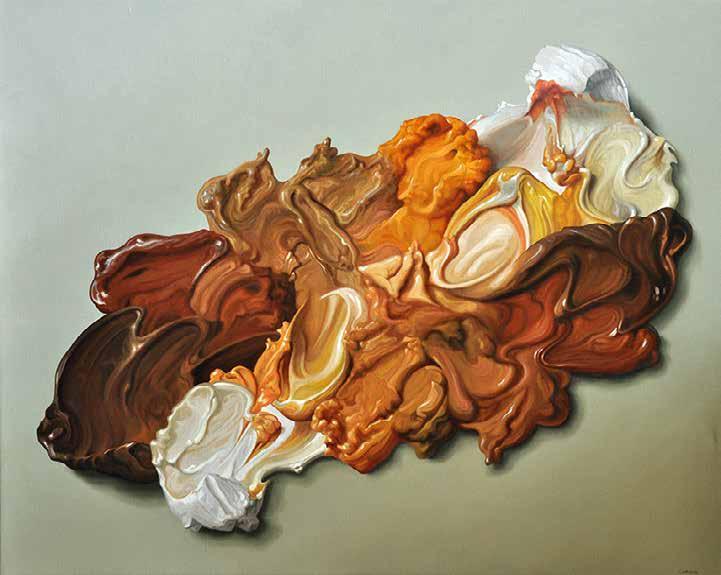 Enrique Campuzano 2018
Enrique Campuzano 2018




































































































































































































































































 Enrique Campuzano 2018
Enrique Campuzano 2018
